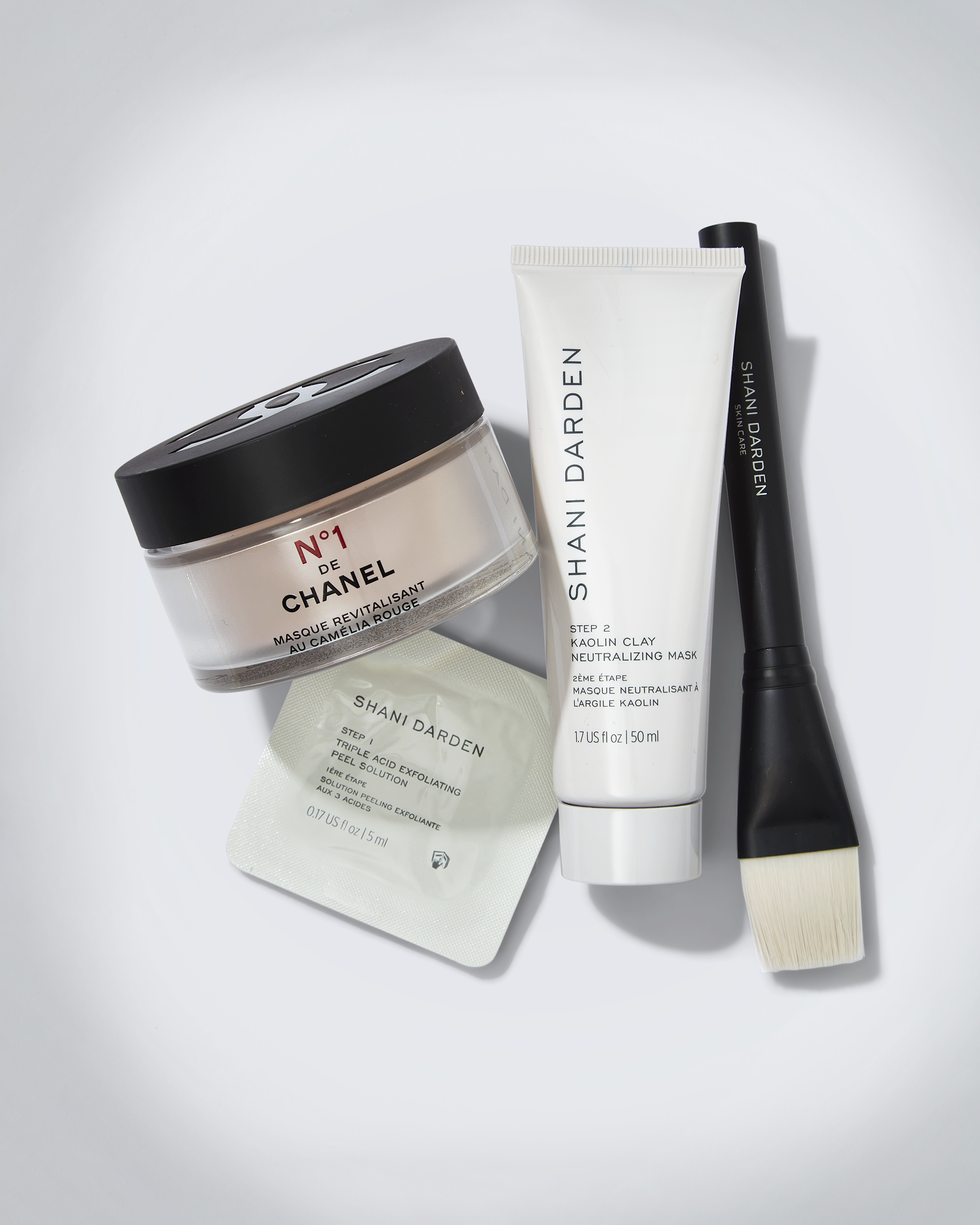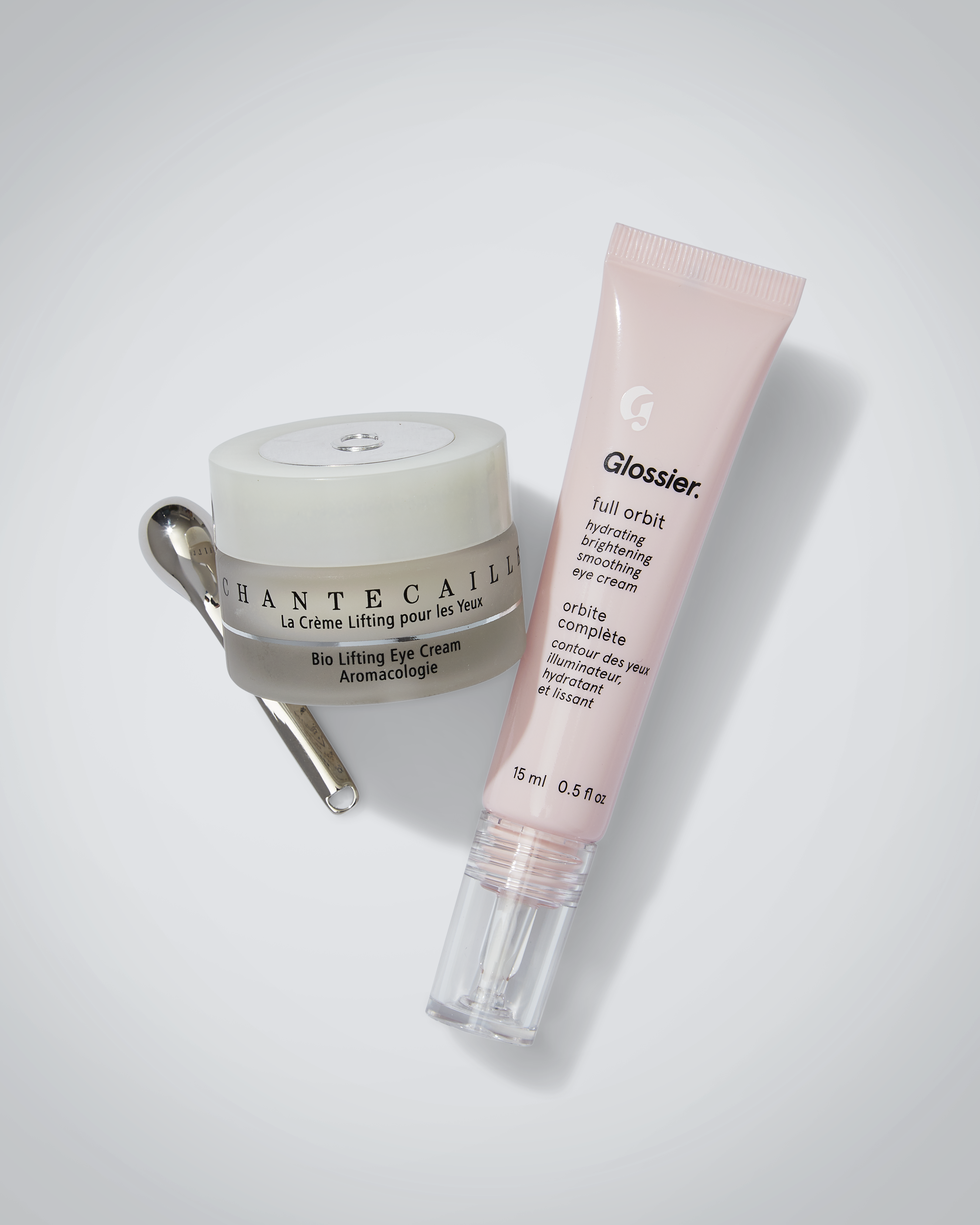- Setups & Tech
- iOS & Mac

Here’s the Best Study Routine (Day & Night with Sample Schedule)
Let’s face it: your search history is probably filled with queries like “best study techniques” or “how to focus better.” Most of what you find is either too generic or not tailored to your learning style. We’re here to offer something more substantial — a scientifically-backed guide to crafting the best study routine. Let’s dive in!
Looking for more study and focus tips? Subscribe to The Flow — our free quick, snappy, value-packed focus and recharge newsletter:
- First Name First
Table of Contents
How to Make a Study Routine
- Sample Study Routines (Day & Night)
Best Techniques for Your Study Routine
Creating an effective study routine isn’t a one-size-fits-all approach. Here’s a breakdown to help you tailor a study routine to your unique schedule and academic needs.
- Evaluate your schedule: Before building your study routine, closely examine your daily schedule and commitments. When do your classes start and end? Do you have any extracurricular activities? Do you have to work after class? By understanding your daily schedule, you can create a more personalized study routine.
- Set realistic goals: Have you ever told yourself that you’d finish reading 10 chapters of your textbook in a single all-nighter? You’re not alone in falling into this lie countless times. That’s why breaking down larger academic goals into smaller, achievable tasks is a must. You need to be able to set specific and realistic goals for each study session.
- Plan study blocks: After being honest with yourself about your goals, decide how many hours a day you would dedicate to studying. It could be as short or as long as you want — as long as you guarantee that you can maximize your study time. The quality of your learning is more important than the quantity or amount of hours you put into studying!
- Create a distraction-free environment: Spending 10 hours studying is useless if it’s broken up scrolling through social media. Because of this, it is important to minimize distractions during your study sessions. You can do this by finding a quiet, clutter-free space where you can concentrate fully. Turn off your phone and use website blockers like Cold Turkey to maximize productivity.
- Organize your study materials : A well-organized set of resources can save you time and stress. Check out our post on the best Notion templates for students for some inspiration.
- Prioritize sleep and schedule: Studying is important, but so is your physical health! Your cognitive abilities are directly linked to your wellbeing. Make sure you get enough sleep and fit in some physical activity to keep your mind sharp.
- Stay consistent: If you start committing to your planned study schedule as much as possible, it’ll eventually become second nature and make it quicker to dive into a state of deep focus every time.
- Be flexible: Life happens, and things don’t always go as planned — and that’s okay! It just means that your routine might need adjustments from time to time. Don’t be too hard on yourself, and learn to adapt to changes in your schedule. If you accidentally missed a study session, relax and just pick up where you left off.
Sample Study Routines to Follow
Morning & afternoon study routine.
If you’re an early riser who enjoys soaking up the morning sun, a daytime study routine is perfect for you. Studying in the morning has the added advantage of being in line with our natural body clock since alertness is at its peak in the morning and early afternoon.
Here’s a sample schedule that you can follow:
- 5:30 AM – 6:15 AM: Rise and shine! Kick-start your day with a healthy breakfast. You can also try to engage in a short meditation or stretching session to feel more awake.
- 6:15 AM – 6:30 AM: Grab a pen and paper or your digital notepad so that you can set your study goals for the day and specific tasks you need to accomplish.
- 6:30 AM – 7:30 AM: Time to exercise! You can do any form of physical activity, from light cardio (like walking) to lifting weights in the gym.
- 7:30 AM – 9:30 AM: First study block (or attend your classes). Start your timer: 25-minute study with a 5-minute break, repeat 4x, then a long break — or use a timer that automatically does it for you .
- 9:30 AM – 10:00 AM: Take an extended break. Stretch, grab a snack, and breathe some fresh air. Look away from your screen to minimize eye strain.
- 10:00 AM – 12:00 PM: Second study block (or attend your classes). Start your timer and finish another full Pomodoro session (25-minute study with a 5-minute break, repeat 4x, then a long break).
- 12:00 PM – 1:00 PM: Lunch break! This is the perfect time to refuel your body with nourishing food and prep for your afternoon study session.
- 1:00 PM – 3:00 PM : Third study block (or attend your classes). Don’t forget to use techniques like active recall and mind mapping (more on that below) to reinforce the concepts you learned in the morning.
- 3:00 PM – 3:30 PM: Time for another extended break. Why not walk to a nearby café for a change of scenery, or go to a virtual café ?
- 3:30 PM – 5:30 PM: Final study block (or attend your classes). Use this final session to consolidate your learning and list areas requiring further attention.
- 5:30 PM – 9:30 PM: Free time! Reward yourself by unwinding and relaxing after a productive day. Pursue your hobbies, spend time with friends and family, or watch a movie .
- 9:30 PM – 5:30 AM: Get a good night’s rest to feel fully recharged the next day!
Nighttime Study Routine
Not everyone is made for a daytime study routine. You might just feel more productive at night, or maybe you’ve got daytime commitments like a job or other extracurricular activities. If you’re a night owl and not an early riser, give this sample nighttime study routine a whirl:
- 5:00 PM – 6:00 PM: Boost your energy with a late-day workout. This will help set your mood for your upcoming study session.
- 6:00 PM – 6:15 PM: Grab a pen and paper or your digital notepad to set your study goals for the night and specific tasks you need to accomplish.
- 6:15 PM – 8:15 PM: First study block. Start your timer and finish a full Pomodoro session (25-minute study with a 5-minute break, repeat 4x, then a long break). Try starting with lighter subjects first to ease yourself into the night.
- 8:15 PM – 9:00 PM: Dinner time! Have a nutritious meal to fuel yourself for the long night ahead.
- 9:00 PM – 11:00 PM: Second study block. Start your timer and finish another full Pomodoro session.
- 11:00 PM – 11:30 PM: Take an extended break. You can even take a power nap if you want to. Just make sure to set an alarm to avoid oversleeping!
- 11:30 PM – 1:30 AM: Third study block. Start your timer and finish another full Pomodoro session. Try switching to a different subject to keep things interesting!
- 1:30 AM – 2:00 AM: Relax and recharge for a while. Don’t forget to stay hydrated and have a light snack if you want to.
- 2:00 AM – 4:00 AM: Final study block. Review the material you studied during the whole night. Why not try to use the Feynman technique to test your learning? (check it out below)
- 4:00 AM – 12:00 PM: Go to bed and make sure you get at least 7-8 hours of sleep. Make sure to turn off your devices and create a relaxing bedtime routine.
- 12:00 PM – 1:00 PM: Time to wake up! Sustain your body’s needs by eating your first meal of the day.
- 1:00 PM – 5:00 PM: Free time! Ideally, you should engage in activities to help unwind and clear your mind. You should also eat your second meal of the day during this period.
With a general framework in place and some sample routines to try, let’s explore some scientifically-backed techniques to enhance your study routine.
Pomodoro Technique
The Pomodoro Technique is a time-tested and community favorite strategy that breaks your study time into 25 minute intervals, followed by short breaks. It helps your brain stay focused and reduces fatigue.
Luckily, you can use dedicated free Pomodoro-focused tools like Flocus to automatically switch between study and break periods instead of winding up a manual timer for each interval.
Don’t know what to do during your study breaks? Here are some Pomodoro break ideas . Also, if you think that the Pomodoro technique isn’t for you, we’ve rounded up some of the best Pomodoro alternatives to try.
Active Recall
Active recall beats passive learning hands down. Instead of simply reading through material, this method challenges you to recall information from memory. In fact, passive learning is considered one of the least effective study methods. Active recall may be challenging to get used to at first, but the amount of retained information you’ll get will make the process worth it! When it comes to active recall, nothing beats the use of flashcards — whether handwritten or created using digital apps such as Anki .
Mind Mapping
If you are visual person, then this strategy is perfect for you. Mind mapping is a visual technique that helps you organize and understand complex information. Basically, it’s creating a map of your thoughts! Start with a central idea and then let it branch out by adding related subtopics and ideas. Feel free to add colors and images to make it even more memorable and effective. Just the process of creating the mind map itself already helps you solidify your understanding of the topic.
Feynman Technique
This technique, inspired by the learning approach of renowned physicist Richard Feynman, involves breaking down complex ideas into simpler terms — as if you’re teaching a concept to a total beginner. While doing this, you’ll probably identify gaps in your knowledge and better understand the topic. Generally, if you can’t explain it simply, you don’t understand it well enough.
Ultimately, the best study routine is the one that fits your unique lifestyle. Experiment with different schedules and see what works best for you. Whether you’re an early riser or a night owl, consistency and dedication are the keys to academic success. Take time to craft your best study routine, and you’ll be acing your exams in no time!
What is the best study routine and schedule for you? Any other study techniques you want to share? Let us know in the comments below!
Gridfiti is supported by its audience – when you buy something using the retail links in our posts, we may earn a small commission at no additional cost to you. Read more about our affiliate disclaimer.
Privacy Preference Center
Privacy preferences.
- Privacy Overview
- Strictly Necessary Cookies
- 3rd Party Cookies
This website uses cookies so that we can provide you with the best user experience possible. Cookie information is stored in your browser and performs functions such as recognising you when you return to our website and helping our team to understand which sections of the website you find most interesting and useful.
Strictly Necessary Cookie should be enabled at all times so that we can save your preferences for cookie settings.
If you disable this cookie, we will not be able to save your preferences. This means that every time you visit this website you will need to enable or disable cookies again.
This website uses Google Analytics to collect anonymous information such as the number of visitors to the site, and the most popular pages.
Keeping this cookie enabled helps us to improve our website.
Please enable Strictly Necessary Cookies first so that we can save your preferences!
6 ways to establish a productive homework routine
Assistant Professor of College Learning Strategies and Instruction, Syracuse University
Disclosure statement
Janine L. Nieroda-Madden does not work for, consult, own shares in or receive funding from any company or organisation that would benefit from this article, and has disclosed no relevant affiliations beyond their academic appointment.
View all partners

Homework. Whether you’re a fifth-grader or a freshman in college, the mere thought of homework can be overwhelming. And actually doing homework can be quite difficult. But homework doesn’t have to be something a student dreads.
As a former high school English teacher and researcher who specializes in what it takes to make it through college – and a co-author of a forthcoming revised edition of a book about academic success – I’ve studied homework since 2010. Here are six ways I believe homework can be made more manageable and valuable, whether you’re in elementary school, high school or graduate school.
1. Set priorities
Establish a list of priorities based on the class syllabus or assignment list. This can be helpful for tackling difficult tasks, creating motivation and activating your sense of control and independence when it comes to learning. The priority list helps maintain goals and gives you a sense satisfaction to cross things off the list as they are completed.
2. Tackle difficult tasks first
Start with your most difficult assignments first in order to make the most of your energy level and to focus at the beginning of a work session. You can attend to the easier or less time-consuming assignments at the end of a work session.
3. Break tasks down to smaller steps
You may not know how to start a major task, which could trigger procrastination or feelings of defeat. To guard against this, break major tasks into three or four smaller steps. Within one homework session, you can feel a greater sense of accomplishment by completing each small step toward the larger whole. In some cases, you might be able to spread these tasks over the course of a week.
4. Create evidence of learning
You will get more out of the time you spend reading, reviewing notes or otherwise “studying” if you create something in the process. For example, creating flash cards, a graphic organizer, chart, or notes with bullet points can help you become an active learner rather than a passive one. Organize the tools you create with the homework assignment by date and topic so that you can review those items to prepare for quizzes, tests or projects.
5. Build a network of support
If certain homework problems could not be solved and you’re stuck in a rut, figure out what’s confusing you and write or record your thoughts. Jot questions down and be as specific as possible in order to seek out additional support from teachers or tutors. The more you can identify sources of confusion, the more you can proactively reach out to your support network – teachers, tutors and others – in order to get additional help.
6. Revisit goals and set new ones
At the start of each homework session, establish goals for completion of your tasks or assignments. Revisit the goals at the end of the session and acknowledge a sense of completion. This goal-setting process builds confidence over time and helps you realize their potential even when faced with difficulties. A productive homework routine will help you realize that learning is an ongoing journey. The journey may be difficult but getting organized will make it as stress-free as possible.
[ Like what you’ve read? Want more? Sign up for The Conversation’s daily newsletter . ]
- US higher education
- Good grades
- K-12 education

Assistant Editor - 1 year cadetship

Program Development Officer - Business Processes

Executive Dean, Faculty of Health

Lecturer/Senior Lecturer, Earth System Science (School of Science)

Sydney Horizon Educators (Identified)
- Trying to Conceive
- Signs & Symptoms
- Pregnancy Tests
- Fertility Testing
- Fertility Treatment
- Weeks & Trimesters
- Staying Healthy
- Preparing for Baby
- Complications & Concerns
- Pregnancy Loss
- Breastfeeding
- School-Aged Kids
- Raising Kids
- Personal Stories
- Everyday Wellness
- Safety & First Aid
- Immunizations
- Food & Nutrition
- Active Play
- Pregnancy Products
- Nursery & Sleep Products
- Nursing & Feeding Products
- Clothing & Accessories
- Toys & Gifts
- Ovulation Calculator
- Pregnancy Due Date Calculator
- How to Talk About Postpartum Depression
- Editorial Process
- Meet Our Review Board
How to Make a Better Homework Schedule for Your Family
Verywell / Zackary Angeline
Why Homework Schedules Are Effective
- Developing a Schedule
Other Considerations
Do you frequently have homework struggles with your child or teen? Or, does your student procrastinate doing their work? Maybe they even fail to turn in assignments. If any of these scenarios resonate with you, a better homework schedule may help.
A regular homework schedule establishes predictable times when homework is to be completed. Once the homework schedule has been in place for a few weeks, you may even find your child will begin doing their homework without needing to be reminded—although you may still need to monitor their work progress.
If you're struggling with homework completion in your household, or if you're having daily battles about allotting the appropriate amount of time to homework, you're not alone. That's why educators recommend developing a homework schedule—with input from your kids.
Once you set a homework schedule, then there are no questions about when the work will be done. It also communicates clear expectations; having a homework schedule helps kids understand what is required of them. And following the schedule encourages them to develop a good work ethic.
Schedules also help prevent procrastination and instill good habits like completing work on time. Homework routines also improve study skills and encourage kids to plan ahead.
Other benefits include developing your child's work ethic and organizational abilities. By helping your child complete their work at regular intervals, you are modeling how to manage time and projects in the future. When you send them off to college , they will know how to pace their work so they can avoid all-nighters at the end of the semester.
How to Develop a Homework Schedule
To develop a homework schedule, start by talking with your kids. Get their input on how they would like to manage their time and incorporate their homework into their daily routine. A successful homework schedule allows kids to finish their work and also have some free time.
Give Kids an Option
If you ask kids when they want to do their homework, their first answer might be "Never" or "Later." But if you dig a little deeper, your child may tell you what matters to them as they plan their schedule. This information will help you avoid scheduling homework during their favorite television program or when they usually get online to play games with friends.
When you include your child in the decision-making process, you also will get more buy-in from them because they know that their concerns were heard. You don't have to give them their way, but at least considering what they have to say will let them feel included. After all, this homework schedule is about them completing their homework.
Allow for Free Time
Some kids can step through the front door and buckle down on their homework right away. When this happens, they reap the reward of getting their work done early and having the rest of the evening to do what they want. But most kids need to eat and decompress a bit before tackling their assignments.
As you develop your homework schedule, keep in mind your child has already spent at least six hours in class. And this time doesn't include getting to and from school or participation in extracurricular programs . Allow kids some free time before beginning their homework if that's what they need to unwind.
Establish a Timeline
Generally, you can expect about 10 minutes of homework per grade level of school. This means that a third-grade student will need about 30 minutes to complete homework. However, the amount of time needed can vary dramatically between students, teachers, and schools.
Find out how much time your child's teacher expects homework to take each evening. If your child takes a lot of time to complete their work or struggles with homework , talk with the teacher. Your child may need extra instruction on a task or tutoring assistance—or fewer homework assignments.
Pick a Homework Spot
Designate a comfortable and efficient spot for your kids to do their homework. This workspace should be well-lit, stocked with supplies , and quiet. The workspace should allow you to provide some supervision.
If you have multiple kids trying to complete their homework at one time, you may want to find a separate location for each child. Sometimes kids can complete their homework together at the kitchen table, but other times having siblings around can be distracting. Do what works best for your family.
Put It All Together
Now that you know what your child's needs and concerns are for finding a time to do homework, you need to come up with the actual plan. Creating a homework routine is really just one piece of creating a daily school year routine .
For the homework time itself, get it down on paper so you can see exactly what they will be doing and when they will be doing it. Do this for each day of the week if you have different activities on different weekdays. Students who are assigned larger projects will need to review their homework plans regularly to make adjustments as needed.
Expect your child to work consistently throughout the assigned time. Avoid having multiple homework sessions, such as one before dinner and a second one after dinner. Starting and stopping may mean children may spend more time getting into what they are doing than working continuously.
Be Consistent
Once you have decided on a time to do homework, stick to the plan! It usually takes about three weeks for most children to really get into the habit of their new schedule.
If your child or teen has difficulty maintaining concentration for the length of time that their homework should take, then you may want to carefully consider breaking up the work to take advantage of the time when your child can focus.
This added step is especially important for children and teens with depression or attention deficit hyperactivity disorder (ADHD). They may benefit from multiple smaller work sessions and more frequent breaks.
Even though the idea behind creating a homework schedule is to get your child to work consistently and independently, you may need to look over their work when they are done. This is especially important for younger children.
Make sure they understand their assignments and that they completed a reasonable amount of work during the homework session. If you find your child is having trouble actually working during their homework time, troubleshoot to find out what might be the issue. Sometimes kids need extra help and other times they simply need more motivation to get their work done.
If you find that your child continues to struggle with homework even with a schedule in place, you might need to dig a little deeper. Consider discussing your child's issues with their teacher or pediatrician.
Sometimes kids are reluctant to complete their homework because of undiagnosed learning disabilities. It could be that your child struggles with reading comprehension or has a processing disorder. Or it could be that your child is struggling with a mental health issue like anxiety .
A Word From Verywell
Establishing a homework schedule allows children to build some important life skills that will help them as they navigate high school, college, and eventually the workforce. Practice is important when kids are learning new skills. So, having a nightly homework routine enhances your child's learning. Just be sure you aren't requiring homework time at the expense of being a kid. Having time to play is just as important to a child's development as learning new material.
National Institute of Mental Health. Attention-deficit/hyperactivity disorder .
By Lisa Linnell-Olsen Lisa Linnell-Olsen has worked as a support staff educator, and is well-versed in issues of education policy and parenting issues.
Internet Explorer is no longer supported
Please upgrade to Microsoft Edge , Google Chrome , or Firefox .
Lo sentimos, la página que usted busca no se ha podido encontrar. Puede intentar su búsqueda de nuevo o visitar la lista de temas populares.
Get this as a PDF
Enter email to download and get news and resources in your inbox.
Share this on social
Strategies to make homework go more smoothly.
Routines and incentive systems to help kids succeed
Writer: Peg Dawson, EdD, NCSP
Clinical Expert: Peg Dawson, EdD, NCSP
Here is the best guide to helping kids do homework successfully that we’ve seen, published by the National Association of School Psychologists on their website, NASPonline.org . Our thanks to NASP for sharing it with us.
There are two key strategies parents can draw on to reduce homework hassles. The first is to establish clear routines around homework, including when and where homework gets done and setting up daily schedules for homework. The second is to build in rewards or incentives to use with children for whom “good grades” is not a sufficient reward for doing homework.
Homework Routines
Tasks are easiest to accomplish when tied to specific routines. By establishing daily routines for homework completion, you will not only make homework go more smoothly, but you will also be fostering a sense of order your child can apply to later life, including college and work.
Step 1. Find a location in the house where homework will be done. The right location will depend on your child and the culture of your family. Some children do best at a desk in their bedroom. It is a quiet location, away from the hubbub of family noise. Other children become too distracted by the things they keep in their bedroom and do better at a place removed from those distractions, like the dining room table. Some children need to work by themselves. Others need to have parents nearby to help keep them on task and to answer questions when problems arise. Ask your child where the best place is to work. Both you and your child need to discuss pros and cons of different settings to arrive at a mutually agreed upon location.
Step 2. Set up a homework center. Once you and your child have identified a location, fix it up as a home office/homework center. Make sure there is a clear workspace large enough to set out all the materials necessary for completing assignments. Outfit the homework center with the kinds of supplies your child is most likely to need, such as pencils, pens, colored markers, rulers, scissors, a dictionary and thesaurus, graph paper, construction paper, glue and cellophane tape, lined paper, a calculator, spell checker, and, depending on the age and needs of your child, a computer or laptop. If the homework center is a place that will be used for other things (such as the dining room table), then your child can keep the supplies in a portable crate or bin. If possible, the homework center should include a bulletin board that can hold a monthly calendar on which your child can keep track of longterm assignments. Allowing children some leeway in decorating the homework center can help them feel at home there, but you should be careful that it does not become too cluttered with distracting materials.
Step 3. Establish a homework time. Your child should get in the habit of doing homework at the same time every day. The time may vary depending on the individual child. Some children need a break right after school to get some exercise and have a snack. Others need to start homework while they are still in a school mode (i.e., right after school when there is still some momentum left from getting through the day). In general, it may be best to get homework done either before dinner or as early in the evening as the child can tolerate. The later it gets, the more tired the child becomes and the more slowly the homework gets done.
Step 4. Establish a daily homework schedule. In general, at least into middle school, the homework session should begin with your sitting down with your child and drawing up a homework schedule. You should review all the assignments and make sure your child understands them and has all the necessary materials. Ask your child to estimate how long it will take to complete each assignment. Then ask when each assignment will get started. If your child needs help with any assignment , then this should be determined at the beginning so that the start times can take into account parent availability. A Daily Homework Planner is included at the end of this handout and contains a place for identifying when breaks may be taken and what rewards may be earned.
Incentive Systems
Many children who are not motivated by the enjoyment of doing homework are motivated by the high grade they hope to earn as a result of doing a quality job. Thus, the grade is an incentive, motivating the child to do homework with care and in a timely manner. For children who are not motivated by grades, parents will need to look for other rewards to help them get through their nightly chores. Incentive systems fall into two categories: simple and elaborate.
Simple incentive systems. The simplest incentive system is reminding the child of a fun activity to do when homework is done. It may be a favorite television show, a chance to spend some time with a video or computer game, talking on the telephone or instant messaging, or playing a game with a parent. This system of withholding fun things until the drudgery is over is sometimes called Grandma’s Law because grandmothers often use it quite effectively (“First take out the trash, then you can have chocolate chip cookies.”). Having something to look forward to can be a powerful incentive to get the hard work done. When parents remind children of this as they sit down at their desks they may be able to spark the engine that drives the child to stick with the work until it is done.
Elaborate incentive systems. These involve more planning and more work on the part of parents but in some cases are necessary to address more significant homework problems. More complex incentives systems might include a structure for earning points that could be used to “purchase” privileges or rewards or a system that provides greater reward for accomplishing more difficult homework tasks. These systems work best when parents and children together develop them. Giving children input gives them a sense of control and ownership, making the system more likely to succeed. We have found that children are generally realistic in setting goals and deciding on rewards and penalties when they are involved in the decision-making process.
Building in breaks. These are good for the child who cannot quite make it to the end without a small reward en route. When creating the daily homework schedule, it may be useful with these children to identify when they will take their breaks. Some children prefer to take breaks at specific time intervals (every 15 minutes), while others do better when the breaks occur after they finish an activity. If you use this approach, you should discuss with your child how long the breaks will last and what will be done during the breaks (get a snack, call a friend, play one level on a video game). The Daily Homework Planner includes sections where breaks and end-of-homework rewards can be identified.
Building in choice. This can be an effective strategy for parents to use with children who resist homework. Choice can be incorporated into both the order in which the child agrees to complete assignments and the schedule they will follow to get the work done. Building in choice not only helps motivate children but can also reduce power struggles between parents and children.
Developing Incentive Systems
Step 1. Describe the problem behaviors. Parents and children decide which behaviors are causing problems at homework time. For some children putting homework off to the last minute is the problem; for others, it is forgetting materials or neglecting to write down assignments. Still others rush through their work and make careless mistakes, while others dawdle over assignments, taking hours to complete what should take only a few minutes. It is important to be as specific as possible when describing the problem behaviors. The problem behavior should be described as behaviors that can be seen or heard; for instance, complains about h omework or rushes through homework, making many mistakes are better descriptors than has a bad attitude or is lazy.
Step 2. Set a goal. Usually the goal relates directly to the problem behavior. For instance, if not writing down assignments is the problem, the goal might be: “Joe will write down his assignments in his assignment book for every class.”
Step 3. Decide on possible rewards and penalties. Homework incentive systems work best when children have a menu of rewards to choose from, since no single reward will be attractive for long. We recommend a point system in which points can be earned for the goal behaviors and traded in for the reward the child wants to earn. The bigger the reward, the more points the child will need to earn it. The menu should include both larger, more expensive rewards that may take a week or a month to earn and smaller, inexpensive rewards that can be earned daily. It may also be necessary to build penalties into the system. This is usually the loss of a privilege (such as the chance to watch a favorite TV show or the chance to talk on the telephone to a friend).
Once the system is up and running, and if you find your child is earning more penalties than rewards, then the program needs to be revised so that your child can be more successful. Usually when this kind of system fails, we think of it as a design failure rather than the failure of the child to respond to rewards. It may be a good idea if you are having difficulty designing a system that works to consult a specialist, such as a school psychologist or counselor, for assistance.
Step 4. Write a homework contract. The contract should say exactly what the child agrees to do and exactly what the parents’ roles and responsibilities will be. When the contract is in place, it should reduce some of the tension parents and kids often experience around homework. For instance, if part of the contract is that the child will earn a point for not complaining about homework, then if the child does complain, this should not be cause for a battle between parent and child: the child simply does not earn that point. Parents should also be sure to praise their children for following the contract. It will be important for parents to agree to a contract they can live with; that is, avoiding penalties they are either unable or unwilling to impose (e.g., if both parents work and are not at home, they cannot monitor whether a child is beginning homework right after school, so an alternative contract may need to be written).
We have found that it is a rare incentive system that works the first time. Parents should expect to try it out and redesign it to work the kinks out. Eventually, once the child is used to doing the behaviors specified in the contract, the contract can be rewritten to work on another problem behavior. Your child over time may be willing to drop the use of an incentive system altogether. This is often a long-term goal, however, and you should be ready to write a new contract if your child slips back to bad habits once a system is dropped.
Click here to download the homework planner and incentive sheet .
Was this article helpful?
Explore popular topics, subscribe to our newsletters.
" * " indicates required fields

Don’t Miss Out
Sign up for more articles and parenting tips direct to your inbox.
6 ways to establish a productive homework routine
by: Janine L. Nieroda-Madden | Updated: December 9, 2019
Print article

Homework. Whether you’re a fifth grader or a freshman in college, the mere thought of homework can be overwhelming. And actually doing homework can be quite difficult. But homework doesn’t have to be something your child dreads.
As a former high school English teacher and researcher who specializes in what it takes to make it through college — and a co-author of a forthcoming revised edition of a book about academic success — I’ve studied homework since 2010. Here are six ways I believe homework can be made more manageable and valuable, whether your child is in elementary school, middle school, high school, or graduate school.
Set priorities
Tackle difficult tasks first, break tasks down to smaller steps, create evidence of learning, build a network of support, revisit goals and set new ones, homes nearby.
Homes for rent and sale near schools

Why your neighborhood school closes for good – and what to do when it does

What should I write my college essay about?
What the #%@!& should I write about in my college essay?

How longer recess fuels child development
How longer recess fuels stronger child development
Yes! Sign me up for updates relevant to my child's grade.
Please enter a valid email address
Thank you for signing up!
Server Issue: Please try again later. Sorry for the inconvenience
- PRO Courses Guides New Tech Help Pro Expert Videos About wikiHow Pro Upgrade Sign In
- EDIT Edit this Article
- EXPLORE Tech Help Pro About Us Random Article Quizzes Request a New Article Community Dashboard This Or That Game Popular Categories Arts and Entertainment Artwork Books Movies Computers and Electronics Computers Phone Skills Technology Hacks Health Men's Health Mental Health Women's Health Relationships Dating Love Relationship Issues Hobbies and Crafts Crafts Drawing Games Education & Communication Communication Skills Personal Development Studying Personal Care and Style Fashion Hair Care Personal Hygiene Youth Personal Care School Stuff Dating All Categories Arts and Entertainment Finance and Business Home and Garden Relationship Quizzes Cars & Other Vehicles Food and Entertaining Personal Care and Style Sports and Fitness Computers and Electronics Health Pets and Animals Travel Education & Communication Hobbies and Crafts Philosophy and Religion Work World Family Life Holidays and Traditions Relationships Youth
- Browse Articles
- Learn Something New
- Quizzes Hot
- This Or That Game
- Train Your Brain
- Explore More
- Support wikiHow
- About wikiHow
- Log in / Sign up
- School Stuff
- Managing Time During School Years
How to Plan a Homework Schedule
Last Updated: April 26, 2024 Approved
This article was co-authored by Ronitte Libedinsky, MS . Ronitte Libedinsky is an Academic Tutor and the Founder of Brighter Minds SF, a San Francisco, California based company that provides one-on-one and small group tutoring. Specializing in tutoring mathematics (pre-algebra, algebra I/II, geometry, pre-calculus, calculus) and science (chemistry, biology), Ronitte has over 10 years of experience tutoring to middle school, high school, and college students. She also tutors in SSAT, Terra Nova, HSPT, SAT, and ACT test prep. Ronitte holds a BS in Chemistry from the University of California, Berkeley, and an MS in Chemistry from Tel Aviv University. There are 7 references cited in this article, which can be found at the bottom of the page. wikiHow marks an article as reader-approved once it receives enough positive feedback. In this case, 89% of readers who voted found the article helpful, earning it our reader-approved status. This article has been viewed 477,336 times.
It feels like homework never stops getting piled on, and keeping track of it all can feel a little chaotic. That’s where a homework schedule comes in. With a good schedule, you won’t have to worry about missing homework assignments or not having enough time to finish them, and it’s surprisingly easy to put one together. Not sure where to start? Don’t worry—we’ll walk you through what to do step-by-step below!
Setting Up a Homework Schedule

Creating a Homework Space

Understanding What Needs To Get Done

- The subject or course in which the work is assigned (for example, Spanish , algebra , French or English )
- Know what you're expected to hand in or do and ask if you do not understand (for example, turn in an essay , develop a PowerPoint presentation, or take a test.)
- The details of your assignments (for example, double-spaced or single-spaced, blue ink or black).
- Page numbers (which pages you need to read, study, or refer to complete your assignment.)
- Due date of the assignment.
Getting All of Your Homework Done

- To solve this problem, if you cannot meet all the deadlines, use a static priority rate-monotonic policy. Find the course that releases new homework the most frequently, and list it the highest (do the work first), and so forth. This is mathematically optimal among all static-priority scheduling policies. In other words, if ANY static priority scheme can meet all the deadlines, the rate-monotonic static priority scheme will meet all the deadlines, too. When the static priority scheme misses deadlines, it is deterministic - the lowest priority class assignments will be skipped, so it behaves predictably when you are overloaded. If certain assignments have the same due date, then start with the one(s) that are hardest or will take the longest.

- If you have a five-page English paper due on Friday, evenly spread the total amount of hours you believe it is going to take to complete the paper between each day.

Homework Planner Template

Expert Q&A
- Avoid distractions such as TV, video games, phone conversation, or surfing the internet. You must fully devote your schedule to doing this. That means turning off all electronics except your lamp , clock , and room light, and, if needed, your computer. You may even want to turn off your phone. Thanks Helpful 0 Not Helpful 0
Tips from our Readers
- Try writing reminders on sticky-notes about your assignment due dates or important information you really need to remember. Put these sticky notes in a place you regularly go to in your house (such as your homework area, bedroom, or closet), so that you'll see them and be reminded.
- If you're having a really hard time concentrating, take a short break (even if it isn't your schedule break time). Even taking a walk outside for ten minutes or grabbing a quick snack from the kitchen can help you reset.
- If music with lyrics distracts you, don't try to listen to it while you do homework. Consider playing white noise or instrumental music instead to help you focus.

You Might Also Like

- ↑ https://www.wssd.k12.pa.us/SettingUpaHomeworkSchedule.aspx
- ↑ https://childmind.org/article/strategies-to-make-homework-go-more-smoothly/
- ↑ https://kidshealth.org/en/teens/homework.html
- ↑ Ronitte Libedinsky, MS. Academic Tutor. Expert Interview. 26 May 2020.
- ↑ https://www.understood.org/en/school-learning/learning-at-home/homework-study-skills/homework-strategies
- ↑ https://www.lifehack.org/articles/featured/6-proven-ways-to-make-new-habits-stick.html
- ↑ https://www.psychologytoday.com/us/blog/happiness-in-world/201203/how-prevent-procrastination
About This Article

- Send fan mail to authors
Reader Success Stories
Did this article help you?
Sandu Getty
May 29, 2019
Syroaghina Beckumnbaineo
Oct 6, 2016
Mckenzie Adams
Sep 29, 2022
Ramji Srinivasan
Dec 21, 2016

Featured Articles

Trending Articles

Watch Articles

- Terms of Use
- Privacy Policy
- Do Not Sell or Share My Info
- Not Selling Info
wikiHow Tech Help Pro:
Develop the tech skills you need for work and life

Choose Your Test
Sat / act prep online guides and tips, how to do homework: 15 expert tips and tricks.
Coursework/GPA

Everyone struggles with homework sometimes, but if getting your homework done has become a chronic issue for you, then you may need a little extra help. That’s why we’ve written this article all about how to do homework. Once you’re finished reading it, you’ll know how to do homework (and have tons of new ways to motivate yourself to do homework)!
We’ve broken this article down into a few major sections. You’ll find:
- A diagnostic test to help you figure out why you’re struggling with homework
- A discussion of the four major homework problems students face, along with expert tips for addressing them
- A bonus section with tips for how to do homework fast
By the end of this article, you’ll be prepared to tackle whatever homework assignments your teachers throw at you .
So let’s get started!

How to Do Homework: Figure Out Your Struggles
Sometimes it feels like everything is standing between you and getting your homework done. But the truth is, most people only have one or two major roadblocks that are keeping them from getting their homework done well and on time.
The best way to figure out how to get motivated to do homework starts with pinpointing the issues that are affecting your ability to get your assignments done. That’s why we’ve developed a short quiz to help you identify the areas where you’re struggling.
Take the quiz below and record your answers on your phone or on a scrap piece of paper. Keep in mind there are no wrong answers!
1. You’ve just been assigned an essay in your English class that’s due at the end of the week. What’s the first thing you do?
A. Keep it in mind, even though you won’t start it until the day before it’s due B. Open up your planner. You’ve got to figure out when you’ll write your paper since you have band practice, a speech tournament, and your little sister’s dance recital this week, too. C. Groan out loud. Another essay? You could barely get yourself to write the last one! D. Start thinking about your essay topic, which makes you think about your art project that’s due the same day, which reminds you that your favorite artist might have just posted to Instagram...so you better check your feed right now.
2. Your mom asked you to pick up your room before she gets home from work. You’ve just gotten home from school. You decide you’ll tackle your chores:
A. Five minutes before your mom walks through the front door. As long as it gets done, who cares when you start? B. As soon as you get home from your shift at the local grocery store. C. After you give yourself a 15-minute pep talk about how you need to get to work. D. You won’t get it done. Between texts from your friends, trying to watch your favorite Netflix show, and playing with your dog, you just lost track of time!
3. You’ve signed up to wash dogs at the Humane Society to help earn money for your senior class trip. You:
A. Show up ten minutes late. You put off leaving your house until the last minute, then got stuck in unexpected traffic on the way to the shelter. B. Have to call and cancel at the last minute. You forgot you’d already agreed to babysit your cousin and bake cupcakes for tomorrow’s bake sale. C. Actually arrive fifteen minutes early with extra brushes and bandanas you picked up at the store. You’re passionate about animals, so you’re excited to help out! D. Show up on time, but only get three dogs washed. You couldn’t help it: you just kept getting distracted by how cute they were!
4. You have an hour of downtime, so you decide you’re going to watch an episode of The Great British Baking Show. You:
A. Scroll through your social media feeds for twenty minutes before hitting play, which means you’re not able to finish the whole episode. Ugh! You really wanted to see who was sent home! B. Watch fifteen minutes until you remember you’re supposed to pick up your sister from band practice before heading to your part-time job. No GBBO for you! C. You finish one episode, then decide to watch another even though you’ve got SAT studying to do. It’s just more fun to watch people make scones. D. Start the episode, but only catch bits and pieces of it because you’re reading Twitter, cleaning out your backpack, and eating a snack at the same time.
5. Your teacher asks you to stay after class because you’ve missed turning in two homework assignments in a row. When she asks you what’s wrong, you say:
A. You planned to do your assignments during lunch, but you ran out of time. You decided it would be better to turn in nothing at all than submit unfinished work. B. You really wanted to get the assignments done, but between your extracurriculars, family commitments, and your part-time job, your homework fell through the cracks. C. You have a hard time psyching yourself to tackle the assignments. You just can’t seem to find the motivation to work on them once you get home. D. You tried to do them, but you had a hard time focusing. By the time you realized you hadn’t gotten anything done, it was already time to turn them in.
Like we said earlier, there are no right or wrong answers to this quiz (though your results will be better if you answered as honestly as possible). Here’s how your answers break down:
- If your answers were mostly As, then your biggest struggle with doing homework is procrastination.
- If your answers were mostly Bs, then your biggest struggle with doing homework is time management.
- If your answers were mostly Cs, then your biggest struggle with doing homework is motivation.
- If your answers were mostly Ds, then your biggest struggle with doing homework is getting distracted.
Now that you’ve identified why you’re having a hard time getting your homework done, we can help you figure out how to fix it! Scroll down to find your core problem area to learn more about how you can start to address it.
And one more thing: you’re really struggling with homework, it’s a good idea to read through every section below. You may find some additional tips that will help make homework less intimidating.

How to Do Homework When You’re a Procrastinator
Merriam Webster defines “procrastinate” as “to put off intentionally and habitually.” In other words, procrastination is when you choose to do something at the last minute on a regular basis. If you’ve ever found yourself pulling an all-nighter, trying to finish an assignment between periods, or sprinting to turn in a paper minutes before a deadline, you’ve experienced the effects of procrastination.
If you’re a chronic procrastinator, you’re in good company. In fact, one study found that 70% to 95% of undergraduate students procrastinate when it comes to doing their homework. Unfortunately, procrastination can negatively impact your grades. Researchers have found that procrastination can lower your grade on an assignment by as much as five points ...which might not sound serious until you realize that can mean the difference between a B- and a C+.
Procrastination can also negatively affect your health by increasing your stress levels , which can lead to other health conditions like insomnia, a weakened immune system, and even heart conditions. Getting a handle on procrastination can not only improve your grades, it can make you feel better, too!
The big thing to understand about procrastination is that it’s not the result of laziness. Laziness is defined as being “disinclined to activity or exertion.” In other words, being lazy is all about doing nothing. But a s this Psychology Today article explains , procrastinators don’t put things off because they don’t want to work. Instead, procrastinators tend to postpone tasks they don’t want to do in favor of tasks that they perceive as either more important or more fun. Put another way, procrastinators want to do things...as long as it’s not their homework!
3 Tips f or Conquering Procrastination
Because putting off doing homework is a common problem, there are lots of good tactics for addressing procrastination. Keep reading for our three expert tips that will get your homework habits back on track in no time.
#1: Create a Reward System
Like we mentioned earlier, procrastination happens when you prioritize other activities over getting your homework done. Many times, this happens because homework...well, just isn’t enjoyable. But you can add some fun back into the process by rewarding yourself for getting your work done.
Here’s what we mean: let’s say you decide that every time you get your homework done before the day it’s due, you’ll give yourself a point. For every five points you earn, you’ll treat yourself to your favorite dessert: a chocolate cupcake! Now you have an extra (delicious!) incentive to motivate you to leave procrastination in the dust.
If you’re not into cupcakes, don’t worry. Your reward can be anything that motivates you . Maybe it’s hanging out with your best friend or an extra ten minutes of video game time. As long as you’re choosing something that makes homework worth doing, you’ll be successful.
#2: Have a Homework Accountability Partner
If you’re having trouble getting yourself to start your homework ahead of time, it may be a good idea to call in reinforcements . Find a friend or classmate you can trust and explain to them that you’re trying to change your homework habits. Ask them if they’d be willing to text you to make sure you’re doing your homework and check in with you once a week to see if you’re meeting your anti-procrastination goals.
Sharing your goals can make them feel more real, and an accountability partner can help hold you responsible for your decisions. For example, let’s say you’re tempted to put off your science lab write-up until the morning before it’s due. But you know that your accountability partner is going to text you about it tomorrow...and you don’t want to fess up that you haven’t started your assignment. A homework accountability partner can give you the extra support and incentive you need to keep your homework habits on track.
#3: Create Your Own Due Dates
If you’re a life-long procrastinator, you might find that changing the habit is harder than you expected. In that case, you might try using procrastination to your advantage! If you just can’t seem to stop doing your work at the last minute, try setting your own due dates for assignments that range from a day to a week before the assignment is actually due.
Here’s what we mean. Let’s say you have a math worksheet that’s been assigned on Tuesday and is due on Friday. In your planner, you can write down the due date as Thursday instead. You may still put off your homework assignment until the last minute...but in this case, the “last minute” is a day before the assignment’s real due date . This little hack can trick your procrastination-addicted brain into planning ahead!

If you feel like Kevin Hart in this meme, then our tips for doing homework when you're busy are for you.
How to Do Homework When You’re too Busy
If you’re aiming to go to a top-tier college , you’re going to have a full plate. Because college admissions is getting more competitive, it’s important that you’re maintaining your grades , studying hard for your standardized tests , and participating in extracurriculars so your application stands out. A packed schedule can get even more hectic once you add family obligations or a part-time job to the mix.
If you feel like you’re being pulled in a million directions at once, you’re not alone. Recent research has found that stress—and more severe stress-related conditions like anxiety and depression— are a major problem for high school students . In fact, one study from the American Psychological Association found that during the school year, students’ stress levels are higher than those of the adults around them.
For students, homework is a major contributor to their overall stress levels . Many high schoolers have multiple hours of homework every night , and figuring out how to fit it into an already-packed schedule can seem impossible.
3 Tips for Fitting Homework Into Your Busy Schedule
While it might feel like you have literally no time left in your schedule, there are still ways to make sure you’re able to get your homework done and meet your other commitments. Here are our expert homework tips for even the busiest of students.
#1: Make a Prioritized To-Do List
You probably already have a to-do list to keep yourself on track. The next step is to prioritize the items on your to-do list so you can see what items need your attention right away.
Here’s how it works: at the beginning of each day, sit down and make a list of all the items you need to get done before you go to bed. This includes your homework, but it should also take into account any practices, chores, events, or job shifts you may have. Once you get everything listed out, it’s time to prioritize them using the labels A, B, and C. Here’s what those labels mean:
- A Tasks : tasks that have to get done—like showing up at work or turning in an assignment—get an A.
- B Tasks : these are tasks that you would like to get done by the end of the day but aren’t as time sensitive. For example, studying for a test you have next week could be a B-level task. It’s still important, but it doesn’t have to be done right away.
- C Tasks: these are tasks that aren’t very important and/or have no real consequences if you don’t get them done immediately. For instance, if you’re hoping to clean out your closet but it’s not an assigned chore from your parents, you could label that to-do item with a C.
Prioritizing your to-do list helps you visualize which items need your immediate attention, and which items you can leave for later. A prioritized to-do list ensures that you’re spending your time efficiently and effectively, which helps you make room in your schedule for homework. So even though you might really want to start making decorations for Homecoming (a B task), you’ll know that finishing your reading log (an A task) is more important.
#2: Use a Planner With Time Labels
Your planner is probably packed with notes, events, and assignments already. (And if you’re not using a planner, it’s time to start!) But planners can do more for you than just remind you when an assignment is due. If you’re using a planner with time labels, it can help you visualize how you need to spend your day.
A planner with time labels breaks your day down into chunks, and you assign tasks to each chunk of time. For example, you can make a note of your class schedule with assignments, block out time to study, and make sure you know when you need to be at practice. Once you know which tasks take priority, you can add them to any empty spaces in your day.
Planning out how you spend your time not only helps you use it wisely, it can help you feel less overwhelmed, too . We’re big fans of planners that include a task list ( like this one ) or have room for notes ( like this one ).
#3: Set Reminders on Your Phone
If you need a little extra nudge to make sure you’re getting your homework done on time, it’s a good idea to set some reminders on your phone. You don’t need a fancy app, either. You can use your alarm app to have it go off at specific times throughout the day to remind you to do your homework. This works especially well if you have a set homework time scheduled. So if you’ve decided you’re doing homework at 6:00 pm, you can set an alarm to remind you to bust out your books and get to work.
If you use your phone as your planner, you may have the option to add alerts, emails, or notifications to scheduled events . Many calendar apps, including the one that comes with your phone, have built-in reminders that you can customize to meet your needs. So if you block off time to do your homework from 4:30 to 6:00 pm, you can set a reminder that will pop up on your phone when it’s time to get started.

This dog isn't judging your lack of motivation...but your teacher might. Keep reading for tips to help you motivate yourself to do your homework.
How to Do Homework When You’re Unmotivated
At first glance, it may seem like procrastination and being unmotivated are the same thing. After all, both of these issues usually result in you putting off your homework until the very last minute.
But there’s one key difference: many procrastinators are working, they’re just prioritizing work differently. They know they’re going to start their homework...they’re just going to do it later.
Conversely, people who are unmotivated to do homework just can’t find the willpower to tackle their assignments. Procrastinators know they’ll at least attempt the homework at the last minute, whereas people who are unmotivated struggle with convincing themselves to do it at a ll. For procrastinators, the stress comes from the inevitable time crunch. For unmotivated people, the stress comes from trying to convince themselves to do something they don’t want to do in the first place.
Here are some common reasons students are unmotivated in doing homework :
- Assignments are too easy, too hard, or seemingly pointless
- Students aren’t interested in (or passionate about) the subject matter
- Students are intimidated by the work and/or feels like they don’t understand the assignment
- Homework isn’t fun, and students would rather spend their time on things that they enjoy
To sum it up: people who lack motivation to do their homework are more likely to not do it at all, or to spend more time worrying about doing their homework than...well, actually doing it.
3 Tips for How to Get Motivated to Do Homework
The key to getting homework done when you’re unmotivated is to figure out what does motivate you, then apply those things to homework. It sounds tricky...but it’s pretty simple once you get the hang of it! Here are our three expert tips for motivating yourself to do your homework.
#1: Use Incremental Incentives
When you’re not motivated, it’s important to give yourself small rewards to stay focused on finishing the task at hand. The trick is to keep the incentives small and to reward yourself often. For example, maybe you’re reading a good book in your free time. For every ten minutes you spend on your homework, you get to read five pages of your book. Like we mentioned earlier, make sure you’re choosing a reward that works for you!
So why does this technique work? Using small rewards more often allows you to experience small wins for getting your work done. Every time you make it to one of your tiny reward points, you get to celebrate your success, which gives your brain a boost of dopamine . Dopamine helps you stay motivated and also creates a feeling of satisfaction when you complete your homework !
#2: Form a Homework Group
If you’re having trouble motivating yourself, it’s okay to turn to others for support. Creating a homework group can help with this. Bring together a group of your friends or classmates, and pick one time a week where you meet and work on homework together. You don’t have to be in the same class, or even taking the same subjects— the goal is to encourage one another to start (and finish!) your assignments.
Another added benefit of a homework group is that you can help one another if you’re struggling to understand the material covered in your classes. This is especially helpful if your lack of motivation comes from being intimidated by your assignments. Asking your friends for help may feel less scary than talking to your teacher...and once you get a handle on the material, your homework may become less frightening, too.
#3: Change Up Your Environment
If you find that you’re totally unmotivated, it may help if you find a new place to do your homework. For example, if you’ve been struggling to get your homework done at home, try spending an extra hour in the library after school instead. The change of scenery can limit your distractions and give you the energy you need to get your work done.
If you’re stuck doing homework at home, you can still use this tip. For instance, maybe you’ve always done your homework sitting on your bed. Try relocating somewhere else, like your kitchen table, for a few weeks. You may find that setting up a new “homework spot” in your house gives you a motivational lift and helps you get your work done.

Social media can be a huge problem when it comes to doing homework. We have advice for helping you unplug and regain focus.
How to Do Homework When You’re Easily Distracted
We live in an always-on world, and there are tons of things clamoring for our attention. From friends and family to pop culture and social media, it seems like there’s always something (or someone!) distracting us from the things we need to do.
The 24/7 world we live in has affected our ability to focus on tasks for prolonged periods of time. Research has shown that over the past decade, an average person’s attention span has gone from 12 seconds to eight seconds . And when we do lose focus, i t takes people a long time to get back on task . One study found that it can take as long as 23 minutes to get back to work once we’ve been distracte d. No wonder it can take hours to get your homework done!
3 Tips to Improve Your Focus
If you have a hard time focusing when you’re doing your homework, it’s a good idea to try and eliminate as many distractions as possible. Here are three expert tips for blocking out the noise so you can focus on getting your homework done.
#1: Create a Distraction-Free Environment
Pick a place where you’ll do your homework every day, and make it as distraction-free as possible. Try to find a location where there won’t be tons of noise, and limit your access to screens while you’re doing your homework. Put together a focus-oriented playlist (or choose one on your favorite streaming service), and put your headphones on while you work.
You may find that other people, like your friends and family, are your biggest distraction. If that’s the case, try setting up some homework boundaries. Let them know when you’ll be working on homework every day, and ask them if they’ll help you keep a quiet environment. They’ll be happy to lend a hand!
#2: Limit Your Access to Technology
We know, we know...this tip isn’t fun, but it does work. For homework that doesn’t require a computer, like handouts or worksheets, it’s best to put all your technology away . Turn off your television, put your phone and laptop in your backpack, and silence notifications on any wearable tech you may be sporting. If you listen to music while you work, that’s fine...but make sure you have a playlist set up so you’re not shuffling through songs once you get started on your homework.
If your homework requires your laptop or tablet, it can be harder to limit your access to distractions. But it’s not impossible! T here are apps you can download that will block certain websites while you’re working so that you’re not tempted to scroll through Twitter or check your Facebook feed. Silence notifications and text messages on your computer, and don’t open your email account unless you absolutely have to. And if you don’t need access to the internet to complete your assignments, turn off your WiFi. Cutting out the online chatter is a great way to make sure you’re getting your homework done.
#3: Set a Timer (the Pomodoro Technique)
Have you ever heard of the Pomodoro technique ? It’s a productivity hack that uses a timer to help you focus!
Here’s how it works: first, set a timer for 25 minutes. This is going to be your work time. During this 25 minutes, all you can do is work on whatever homework assignment you have in front of you. No email, no text messaging, no phone calls—just homework. When that timer goes off, you get to take a 5 minute break. Every time you go through one of these cycles, it’s called a “pomodoro.” For every four pomodoros you complete, you can take a longer break of 15 to 30 minutes.
The pomodoro technique works through a combination of boundary setting and rewards. First, it gives you a finite amount of time to focus, so you know that you only have to work really hard for 25 minutes. Once you’ve done that, you’re rewarded with a short break where you can do whatever you want. Additionally, tracking how many pomodoros you complete can help you see how long you’re really working on your homework. (Once you start using our focus tips, you may find it doesn’t take as long as you thought!)

Two Bonus Tips for How to Do Homework Fast
Even if you’re doing everything right, there will be times when you just need to get your homework done as fast as possible. (Why do teachers always have projects due in the same week? The world may never know.)
The problem with speeding through homework is that it’s easy to make mistakes. While turning in an assignment is always better than not submitting anything at all, you want to make sure that you’re not compromising quality for speed. Simply put, the goal is to get your homework done quickly and still make a good grade on the assignment!
Here are our two bonus tips for getting a decent grade on your homework assignments , even when you’re in a time crunch.
#1: Do the Easy Parts First
This is especially true if you’re working on a handout with multiple questions. Before you start working on the assignment, read through all the questions and problems. As you do, make a mark beside the questions you think are “easy” to answer .
Once you’ve finished going through the whole assignment, you can answer these questions first. Getting the easy questions out of the way as quickly as possible lets you spend more time on the trickier portions of your homework, which will maximize your assignment grade.
(Quick note: this is also a good strategy to use on timed assignments and tests, like the SAT and the ACT !)
#2: Pay Attention in Class
Homework gets a lot easier when you’re actively learning the material. Teachers aren’t giving you homework because they’re mean or trying to ruin your weekend... it’s because they want you to really understand the course material. Homework is designed to reinforce what you’re already learning in class so you’ll be ready to tackle harder concepts later.
When you pay attention in class, ask questions, and take good notes, you’re absorbing the information you’ll need to succeed on your homework assignments. (You’re stuck in class anyway, so you might as well make the most of it!) Not only will paying attention in class make your homework less confusing, it will also help it go much faster, too.

What’s Next?
If you’re looking to improve your productivity beyond homework, a good place to begin is with time management. After all, we only have so much time in a day...so it’s important to get the most out of it! To get you started, check out this list of the 12 best time management techniques that you can start using today.
You may have read this article because homework struggles have been affecting your GPA. Now that you’re on the path to homework success, it’s time to start being proactive about raising your grades. This article teaches you everything you need to know about raising your GPA so you can
Now you know how to get motivated to do homework...but what about your study habits? Studying is just as critical to getting good grades, and ultimately getting into a good college . We can teach you how to study bette r in high school. (We’ve also got tons of resources to help you study for your ACT and SAT exams , too!)
These recommendations are based solely on our knowledge and experience. If you purchase an item through one of our links, PrepScholar may receive a commission.

Ashley Sufflé Robinson has a Ph.D. in 19th Century English Literature. As a content writer for PrepScholar, Ashley is passionate about giving college-bound students the in-depth information they need to get into the school of their dreams.
Student and Parent Forum
Our new student and parent forum, at ExpertHub.PrepScholar.com , allow you to interact with your peers and the PrepScholar staff. See how other students and parents are navigating high school, college, and the college admissions process. Ask questions; get answers.

Ask a Question Below
Have any questions about this article or other topics? Ask below and we'll reply!
Improve With Our Famous Guides
- For All Students
The 5 Strategies You Must Be Using to Improve 160+ SAT Points
How to Get a Perfect 1600, by a Perfect Scorer
Series: How to Get 800 on Each SAT Section:
Score 800 on SAT Math
Score 800 on SAT Reading
Score 800 on SAT Writing
Series: How to Get to 600 on Each SAT Section:
Score 600 on SAT Math
Score 600 on SAT Reading
Score 600 on SAT Writing
Free Complete Official SAT Practice Tests
What SAT Target Score Should You Be Aiming For?
15 Strategies to Improve Your SAT Essay
The 5 Strategies You Must Be Using to Improve 4+ ACT Points
How to Get a Perfect 36 ACT, by a Perfect Scorer
Series: How to Get 36 on Each ACT Section:
36 on ACT English
36 on ACT Math
36 on ACT Reading
36 on ACT Science
Series: How to Get to 24 on Each ACT Section:
24 on ACT English
24 on ACT Math
24 on ACT Reading
24 on ACT Science
What ACT target score should you be aiming for?
ACT Vocabulary You Must Know
ACT Writing: 15 Tips to Raise Your Essay Score
How to Get Into Harvard and the Ivy League
How to Get a Perfect 4.0 GPA
How to Write an Amazing College Essay
What Exactly Are Colleges Looking For?
Is the ACT easier than the SAT? A Comprehensive Guide
Should you retake your SAT or ACT?
When should you take the SAT or ACT?
Stay Informed
Get the latest articles and test prep tips!
Looking for Graduate School Test Prep?
Check out our top-rated graduate blogs here:
GRE Online Prep Blog
GMAT Online Prep Blog
TOEFL Online Prep Blog
Holly R. "I am absolutely overjoyed and cannot thank you enough for helping me!”
8 Elements to a Successful Homework Routine

Setting aside the debate about whether or not homework is beneficial , there’s no doubt that it’s a staple of most kids’ academic routines. And while a missed assignment here or there may seem like no big deal, you might be surprised about how chronic lateness or missed practice can spiral into long-term negative impacts. Kids can quickly find themselves confused, getting bad test grades , and struggling with stress and anxiety in school.
That’s all the more reason to get a solid homework routine in place and make adjustments as needed.
(Don’t get us wrong: we’re not proposing that kids race through their homework and turn in sloppy, incomplete work. When assigned correctly, homework provides valuable opportunities for practice, and kids should take advantage of those opportunities.)
Here are eight elements to creating a homework routine that will help kids and teens complete assignments quickly—and well!
1. Build good assignment recording habits
Yes, the secret to getting homework done quickly and correctly starts before kids finish their school day!
Think about it.
If they’re missing key details about assignment instructions or where to find what they need, the homework process automatically gets longer and more frustrating.
So, encourage your student to ask their teacher clarifying questions in class or during the school day. Teachers will often establish clear routines about where homework assignments can be found (posted in the classroom, on their website etc.). Kids should be well-versed in these routines and accustomed to writing them down or recording them as needed. If your student isn’t there yet, it’s a great place to start.
2. Create a dedicated workspace
Ask your child: where do they do their homework? Is it on the couch with Netflix going in the background, or on the go between other activities?
If that’s the case, that could well be the root of the issue. A focused environment can make all the difference in getting homework done efficiently. Talk with your child about the best environment for giving their homework their undivided attention.
3. Remove electronic distractions
They deserve their own category because of how frequently they are the true culprits!
As most parents are likely aware, social media, video games, and other online platforms can be a major distraction if they’re within reach during homework time. Make sure they’re removed from where your child is doing their homework: cell phones should remain in a different room, try using websites like Blocksite if internet access is necessary for their homework, and encourage low-tech alternatives (a handheld calculator instead of a cell phone, a textbook instead of a laptop, etc.).

4. Make a schedule and stick to it
Encourage your child to take stock of the night’s assignments and stick to a homework schedule to make sure they’re on track. They may need help at first to estimate how much time each assignment might take, and support from you can go a long way here!
It also helps to jot down this schedule somewhere to have a visual reminder of how things are going. That way, if kids get distracted or are perhaps over-analyzing a homework problem, they can remember the plan.
5. Take time to gather necessary materials
Last-minute scrambling can be a major time suck. And by being proactive, your student can avoid that scramble. Before jumping into their homework, kids should make sure they have everything they need.
This should factor into the schedule-making phase of doing homework, and once they have everything they require, kids can get started. If you’re concerned that this process might in itself become a distraction for your child, it’s probably a good idea to support and/or supervise this process, at least until kids can navigate it independently.
6. Plan for overcoming distractions
Changing habits takes time, and expecting perfection can actually hinder progress more than it can help. Especially as kids adjust to their new homework routine, distractions and slip-ups are bound to happen, so it’s best to have a plan in place for that eventuality.
It might be wise to anticipate how kids can respond quickly if they miss an assignment or get sidetracked. Work with them to develop a plan for getting back on track, a habit that will be equally important in building strong homework habits.
7. Schedule breaks
Wouldn’t it be nice if we could power through our to-do lists without needing to stop and take a breath? Yes, but unfortunately, we’re only human! So, it makes all the sense in the world to schedule breaks into the homework schedule.
Ideally, these breaks should be quick and planned as part of the schedule your child has created, potentially with your help. Shoot for 5-10 minutes, something kids can easily pick up and put down so they can get back to work.
8. Pick a reward for successful homework completion!
Positive reinforcement is what keeps good habits going over time. Make sure to praise your child for knocking out their homework in a timely manner. Brainstorm with your child about long and short term rewards, and you’ll be amazed at how they can sustain positive change.
With all the demands of school today, it’s a game changer to have one less thing to worry about.
Featured Posts
Meet id tech.
Sign up for our emails to learn more about why iD Tech is #1 in STEM education! Be the first to hear about new courses, locations, programs, and partnerships–plus receive exclusive promotions! AI summer camps , coding classes for kids , and more!
Virginia started with iD Tech at the University of Denver in 2015 and has loved every minute since then! A former teacher by trade, she has a master's in education and loves working to embolden the next generation through STEM. Outside the office, you can usually find her reading a good book, struggling on a yoga mat, or exploring the Rocky Mountains.
Related posts
- The 10 Best Math Apps for Kids in 2022 The way students learn is changing. Just like in other aspects of 21st century life, the mobile device is front and center. Whether kids are using
- 25 Fun & Creative Math Activities Kids Will Love If math is your student’s least favorite subject, everything from classes to homework to
- Parent Resources 7 online homework tips for a successful distance learning experience I’ve known plenty of smart, successful people who simply weren’t great at focusing, whether that was during tests, when studying, in class, in meet
iD Tech Privacy Policy
Id tech privacy policy publish date: 10/26/2023.
internalDrive, Inc. (“iD Tech”) respects your privacy and recognizes the importance of your personal information. We are committed to protecting your information through our compliance with this Privacy Policy.
This Privacy Policy applies to all individuals who visit and/or use iD Tech/internalDrive, Inc.'s websites, services, and products that collect data and/or display these terms ("iD Sites & Services"). This Privacy Policy describes the types of information we may collect when you visit an iD Tech website, open an account or receive iD Tech Services and our practices for using, maintaining, protecting and disclosing that information.
All references to "us," "we," or "our" refer to iD Tech/internalDrive, Inc.
All references to "child" or "children" refer to children under the age of 13.
By accessing or otherwise using any of our iD Sites & Services, you consent to the terms contained in this privacy statement, including the collection, use, and disclosure of data as described below.
California Residents: iD Tech’s PRIVACY NOTICE FOR CALIFORNIA RESIDENTS supplements the information contained in this Privacy Policy and applies solely to visitors, users, and others who reside in the State of California.
I. Information We May Ask You To Provide
Through our iD Sites & Services, we collect information about you and/or your student when you choose to provide it to us. For example, we collect information from you so you can use iD Sites & Services, purchase products and services, register for and obtain an account, request information, apply for a job, register for one of our programs, or verify your age. In general, we may ask you to provide us with the following types of information about you and/your student:
- Contact information such as name, email address, mailing address, phone numbers (note to parents/guardians of children: if we have actual knowledge that a user is under 13 years old, the child will be asked to have their parent or guardian continue the registration process);
- Month, day, and year of birth;
- Gender preference;
- Course interests;
- Billing information such as credit card number and billing address;
- User names to third-party systems (for example, Facebook);
- Information provided on forums or chat rooms within our iD Sites & Services (note to parents/guardians of children: forums and chat rooms permit a child user to enter comments through which the child could provide personal information that would be visible to other users);
- Information included in résumés and job applications; and
- Health, any participation limitations or needs, immunization and allergy information.
Note to Parents/Guardians : We only collect the information described above, from someone we know to be a child, after the child's parent or guardian provides us with verifiable consent, unless one of the limited exceptions discussed below applies. For more information and/or to review these limited exceptions, please see the " Our Commitment to Children’s Privacy " section below. II. Information Collected Automatically Cookies and other Tracking Technologies We may use cookies, web beacons, pixel tags, log files, Local Storage Objects, or other technologies to collect certain information about visitors to and users of iD Sites & Services, such as the date and time you visit iD Sites & Services, the areas or pages of iD Sites & Services that you visit, the amount of time you spend viewing or using iD Sites & Services, the number of times you return to iD Sites & Services, other click-stream or usage data, and emails that you open, forward or click through to iD Sites & Services. For example, we may automatically collect certain information, such as the type of web browser and operating system you use, the name of your Internet Service Provider, Internet Protocol (“IP”) address, software version, and the domain name from which you accessed our iD Sites & Services. We use this information to monitor and improve our iD Sites & Services, support the internal operations of our iD Sites & Services, personalize your online experience, verify e-signatures, and for internal analysis.
We may also use cookies, web beacons, and other similar technologies from third party partners such as Google for measurement services, better targeting advertisements and for marketing purposes. These cookies, web beacons, and other similar technologies allow us to display our promotional material to you on other sites you visit across the internet. Our third-party advertising partners may also use these technologies to identify your browsing interests over time and across different websites to deliver targeted advertisements.
iD Sites & Services do not recognize “Do Not Track” headers or similar mechanisms.
iD Tech partners with Rakuten Advertising, who may collect personal information when you interact with our site. The collection and use of this information is subject to Rakuten’s privacy policy located at https://rakutenadvertising.com/legal-notices/services-privacy-policy/ . Our Sites & Services may also use other third-party plug-ins to provide additional services and benefits. These third parties may collect information about you as well. When we use a third-party plug-in we will attempt to provide you with the identify the plug-in, so you can visit the sites of the third-parties to view the privacy policy under which the information they collect is identified and controlled.
We may also collect geolocation information from your device so we can customize your experience on our iD Sites & Services. In most cases, you are able to turn off such data collection at any time by accessing the privacy settings of your device and/or through the settings in the applicable GPS application. Social Media You also can engage with our content, and other offerings, on or through social media services or other third-party platforms, such as Facebook, or other third-party social media plug-ins, integrations and applications. When you engage with our content on or through social media services or other third-party platforms, plug-ins, integrations or applications, you may allow us to have access to certain information in your profile. This may include your name, email address, photo, gender, birthday, location, an ID associated with the applicable third-party platform or social media account user files, like photos and videos, your list of friends or connections, people you follow and/or who follow you, or your posts or "likes." For a description on how social media services and other third-party platforms, plug-ins, integrations, or applications handle your information, please refer to their respective privacy policies and terms of use, which may permit you to modify your privacy settings.
When we interact with you through our content on third-party websites, applications, integrations or platforms, we may obtain any information regarding your interaction with that content, such as content you have viewed, and information about advertisements within the content you have been shown or may have clicked on. Information from Third Party Services We may also obtain other information, including personal information, from third parties and combine that with information we collect through our Websites. For example, we may have access to certain information from a third-party social media or authentication service if you log in to our Services through such a service or otherwise provide us with access to information from the service. Any access that we may have to such information from a third-party social media or authentication service is in accordance with the authorization procedures determined by that service. If you authorize us to connect with a third-party service, we will access and store your name, email address(es), current city, profile picture URL, and other personal information that the third party service makes available to us, and use and disclose it in accordance with this Policy. You should check your privacy settings on these third-party services to understand and change the information sent to us through these services. For example, you can log in to the Services using single sign-in services such as Facebook Connect or an Open ID provider.
III. Your Ability To Control Cookies And Similar Technologies As noted, we may use cookies or similar technologies to monitor and improve iD Sites & Services, support the internal operations of iD Sites & Services, personalize your online experience, support the e-signature process, and/or for internal analysis. This includes the use of third-party cookies. We use these technologies to keep track of how you are using our iD Sites & Services and to remember certain pieces of general information.
You have the ability to accept or decline cookies. Most web browsers automatically accept cookies, but you can usually modify your browser setting to decline cookies if you prefer. Check the “Tools” or “Help” tab on your browser to learn how to change your cookie and other tracking preferences.
If you choose to decline cookies, you may not be able to fully experience the functions of iD Sites & Services and/or some of our services will function improperly, in particular the inability to log in or manage items in your shopping cart. We do not share cookie data with any third parties. IV. How We May Use Your Information We may use the information we collect from and about you and/or your student for any of the following purposes:
- Allow you to register yourself or your student with iD Sites & Services, or to otherwise register and open an account with us;
- Allow you and/or your student to use iD Sites & Services;
- Fulfill orders, process payments, and prevent transactional fraud;
- Respond to your or your student’s requests or inquiries;
- Provide you or your student with information about our products and services;
- Consider you for employment or a volunteer opportunity;
- Register you or your student in one of our programs;
- Verify your student's age;
- Monitor and improve iD Sites & Services, support the internal operations of iD Sites & Services, personalize your online experience, and for internal analysis;
- Protect the security or integrity of iD Sites & Services and our business;
- Facilitate the sale or potential sale of our business or any of our assets; or
- As required by law.
V. How We Share Information We do not sell or otherwise share your or your student’s information with any third parties, except for the limited purposes described below. Parents/guardians of children under the age of 13 have the option of consenting to the collection and use of their child's personal information without consenting to the disclosure of that information to certain third parties.
1. Law Enforcement And Safety
We may access, preserve, and/or disclose the information we collect and/or content you and/or your student/child provides to us (including information posted on our forums) to a law enforcement agency or other third parties if required to do so by law or with a good faith belief that such access, preservation, or disclosure is reasonably necessary to: (i) comply with legal process; (ii) enforce the Terms and Conditions of iD Sites & Services; (iii) respond to claims that the content violates the rights of third parties; or (iv) protect the rights, property, or personal safety of the owners or users of iD Sites & Services, a third party, or the general public. We also may disclose information whenever we believe disclosure is necessary to limit our legal liability; to protect or defend our rights or property; or protect the safety, rights, or property of others. 2. Service Providers; Colleges and Universities Information collected through iD Sites & Services may be transferred, disclosed, or shared with third parties engaged by us to handle and deliver certain activities, such as housing, meals, payment processing, mail/email distribution, software providers, and to perform other technical and processing functions, such as maintaining data integrity, programming operations, user services, or technology services. We may provide these third parties’ information collected as needed to perform their functions, but they are prohibited from using it for other purposes and specifically agree to maintain the confidentiality of such information. Some of these providers, such as payment processors, may request additional information during the course of offering their services. Before you provide additional information to third-party providers, we encourage you to review their privacy policies and information collection practices. 3. Business Transfer During the normal course of our business, we may sell or purchase assets. If another entity may acquire and/or acquires us or any of our assets, information we have collected about you may be transferred to such entity. In addition, if any bankruptcy or reorganization proceeding is brought by or against us, such information may be considered an asset of ours and may be sold or transferred to third parties. Should a sale or transfer occur, we will use reasonable efforts to try to require that the transferee use personal information provided through our iD Sites & Services in a manner that is consistent with this privacy statement. VI. Our Commitment To Children’s Privacy Protecting the privacy of children is paramount. We understand that users and visitors of our iD Sites & Services who are under 13 years of age need special safeguards and privacy protection. It is our intent to fully comply with the Children's Online Privacy Protection Act (COPPA).
Our iD Sites & Services are intended for general audiences. We do not knowingly permit anyone under 13 years of age to provide us with personal information without obtaining a parent's or guardian’s verifiable consent, except where:
- the sole purpose of collecting the name or online contact information of a parent or child is to provide notice and obtain parental consent;
- the purpose of collecting a parent’s online contact information is to provide voluntary notice to, and subsequently update the parent about, the child’s participation in our iD Sites & Services that do not otherwise collect, use, or disclose childrens' personal information;
- the sole purpose of collecting online contact information from a child is to respond directly on a one-time basis to a specific request from the child, and where such information is not used to re-contact the child or for any other purpose, is not disclosed, and is deleted by us promptly after responding to the child’s request;
- the purpose of collecting a child’s and a parent’s online contact information is to respond directly more than once to the child’s specific request, and where such information is not used for any other purpose, disclosed, or combined with any other information collected from the child;
- the purpose of collecting a child’s and a parent’s name and online contact information, is to protect the safety of a child, and where such information is not used or disclosed for any purpose unrelated to the child’s safety;
- we collect a persistent identifier and no other personal information and such identifier is used for the sole purpose of providing support for the internal operations of iD Sites & Services; or
- otherwise permitted or required by law.
If we receive the verifiable consent of a child's parent or guardian to collect, use, and/or disclose the child's information, we will only collect, use, and disclose the information as described in this privacy statement. Some features of our iD Sites & Services permit a child user to enter comments, such as forums and chat rooms, through which the child could provide personal information that would be visible to other users. If you are the parent or guardian of a child user, please advise your child of the risks of posting personal information on this iD Sites & Services or any other site. VII. Parental/Guardian Rights If you are a parent or guardian, you can review or have deleted your child's personal information, and refuse to permit further collection or use of your child's information. To exercise any of these rights, please email us at [email protected] or send your request to:
iD Tech ∙ PO Box 111720 ∙ Campbell, CA 950011 Client Service Toll Free Number: 1-888-709-8324
VIII. Restrictions On Child Users Children under 13 years of age are prevented from accessing areas of iD Sites & Services which include, but are not restricted to, client account information, unless approved by their parent or guardian and any course content defined as age inappropriate by the Entertainment Software Rating Board (ESRB). IX. Forums And Chats We may offer forums and chat rooms. Please be aware that anyone may read postings on a forum or in a chat room. Furthermore, any information which is posted to a forum or chat room could include personal information, which would be disclosed and available to all users of that forum or chat room, and is therefore no longer private. We cannot guarantee the security of information that any user discloses or communicates online in public areas such as forums and chat rooms. Those who do so, do so at their own risk. We reserve the right to monitor the content of the forums and chat rooms. If age-inappropriate content or potentially identifiable information is seen, it may be removed or edited by us for security, privacy, and/or legal reasons. We will not republish postings from forums or chat rooms anywhere on the Web. X. Links And Third Parties
At our discretion, we may include or offer third-party websites, products, and services on iD Sites & Services. These third-party sites, products, and services have separate and independent privacy policies. You should consult the respective privacy policies of these third parties. We have no responsibility or liability for the content and activities of linked sites, products, or services.
Our iD Sites & Services may contain links to other third-party websites, chat rooms, or other resources that we provide for your convenience. These sites are not under our control, and we are not responsible for the content available on other sites. Such links do not imply any endorsement of material on our part and we expressly disclaim all liability with regard to your access to such sites. Access to any other websites linked to from iD Sites & Services is at your own risk.
XI. Legal Basis for processing Personal Data and Your Data Protection Rights under the General Data Protection Regulation (GDPR)
If you are a resident of the European Economic Area (EEA), iD Tech’s legal basis for collecting and using your personal information as described in this policy depends on the personal Data we collect and the context in which we collect it. ID Tech may process your personal data:
- To provide the services which you requested or purchased;
- Because you have given us permission to do so;
- To provide you with better services, including conducting audits and data analysis;
- For payment processing;
- For marketing; and
- To comply with the law
You have certain data protection rights. iD Tech aims to take reasonable steps to allow you to correct, amend, delete or limit the use of your Personal Data.
If you wish to be informed about what Personal Data we hold about you and if you want it to be removed from our systems, please contact us at [email protected] .
In certain circumstances, you have the following data protection rights:
- The right to access, update, or delete the information we have on you. Whenever made possible, you can access, update, or request deletion of your Personal Data directly within your account settings section. If you are unable to perform these actions yourself, please contact us to assist you.
- The right to have your information corrected if that information is inaccurate or incomplete.
- The right to object. You have the right to object to our processing of your Personal Data.
- The right of restriction. You have the right to request that we restrict the processing of your personal information.
- The right to data portability. You have the right to be provided with a copy of the information we have on you in a structured, machine-readable, and commonly used format.
- The right to withdraw consent. You also have the right to withdraw your consent at any time where iD Tech relied on your consent to process your personal information.
Please note that we may ask you to verify your identity before responding to such requests.
You have the right to complain to a Data Protection Authority about our collection and use of your Personal Data. For more information, please contact your local data protection authority in the European Economic Area (EEA). XII. International Visitors (non GDPR Locations) Our iD Sites & Services are operated and managed on servers located in the United States. If you choose to use our iD Sites & Services from the European Union or other regions of the world with laws governing data collection and uses that differ from the United States, then you recognize and agree that you are transferring your personal information outside of those regions to the United States and you consent to that transfer. XIII. Data Security Commitment To prevent unauthorized access, maintain data accuracy, and ensure the correct use of information, we have put in place reasonable physical, electronic, and managerial procedures to safeguard and secure the information we collect. We also use Secure Sockets Layer (SSL) protocol on your account information and registration pages to protect sensitive personal information. Sensitive data is encrypted on our iD Sites & Services and when stored on the servers.
XIV. How You Can Access, Request A Copy, Correct, Or Ask For Information To Be Deleted Access to certain personal Information that is collected from our Services and that we maintain may be available to you. For example, if you created a password-protected account within our Service, you can access that account to review the information you provided.
You may also send an email or letter to the following email or call the number provided to ask for a copy, correction, or ask us to delete your personal Information. Please include your registration information for such services, such as first name, last name, phone, and email address in the request. We may ask you to provide additional information for identity verification purposes or to verify that you are in possession of an applicable email account. Email: [email protected] Phone: 1-888-709-8324 XV. How To Contact Us/Opting Out Of Electronic Communications If you have any questions or concerns about this Privacy Policy or if you have provided your email and/or address and prefer not to receive marketing information, please contact us via email or call at the number provided below. Make sure you provide your name as well as the email(s) and address(es) you wish to have removed.
If you have signed up to receive text messages from us and no longer wish to receive such messages, you may call or email us at the address provided below. Please provide your name, account email, and the number(s) you want removed. Email: [email protected] Phone: 1-888-709-8324 XVI. Terms And Conditions Your use of our iD Sites & Services and any information you provide on our iD Sites & Services are subject to the terms of the internalDrive, Inc. (referred to as “iD Tech”) Terms and Conditions. XVII. Privacy Statement Changes We will occasionally amend this privacy statement. We reserve the right to change, modify, add, or remove portions of this statement at any time. If we materially change our use of your personal information, we will announce such a change on relevant iD Sites & Services and will also note it in this privacy statement. The effective date of this privacy statement is documented at the beginning of the statement. If you have any questions about our privacy statement, please contact us in writing at [email protected] or by mail at PO Box 111720, Campbell, CA 95011. XVIII. Your Credit Card Information And Transactions For your convenience, you may have us bill you or you can pay for your orders by credit card. If you choose to pay by credit card, we will keep your credit card information on file, but we do not display that information at the online registration site. For your security, your credit card security number is not stored in our system.
We use state-of-the-art Secure Socket Layer (SSL) encryption technology to safeguard and protect your personal information and transactions over the Internet. Your information, including your credit card information, is encrypted and cannot be read as it travels over the Internet. XIX. Social Networking Disclaimer iD Tech provides several opportunities for social networking for both participants and staff on sites such as Facebook, Instagram, Twitter, Flickr, and YouTube. These sites are not affiliated with iD Tech and offer their own individual social networking services. Please read the following Terms and Conditions carefully, as well as the Terms and Conditions of the sites in which iD Tech has created a forum ("Group"). These Terms and Conditions are a legal agreement between you and iD Tech and apply to you whether you are a visitor to these sites or any site with an official iD Tech affiliation. iD Tech is a member of several pre-existing sites (as mentioned above). There may be, however, portions of www.iDTech.com that include areas where participants can post submissions. Any of the above-mentioned "Sites" (or other similar sites) have their own distinct rules and regulations. iD Tech reserves the right to take action to remove any content deemed inappropriate by the sites or by iD Tech standards. iD Tech will not be held liable for any loss of content or disagreements that may arise between the individual social networking site and the user. You understand that by registering for an iD Tech program, your participant(s) may access and upload content to social networking sites. In order to access certain features of the social networking sites or pages on iDTech.com, and to post Member Submissions, the majority of these sites require that the user open an account with them. Please note that these sites have their own individual Terms and Conditions that must be followed. Age requirements are outlined within each Site's Terms and Conditions. You hereby authorize your participant to access social networking sites while at camp and create an account if they choose to do so and if they meet the requirements listed by each site to create an account. Interaction with other users:
- iD Tech is merely providing a medium in which to socialize online with fellow participants. Users are solely responsible for interactions (including any disputes) with other Members and any volunteers that may advise and assist participants with projects and activities via your use of the iD Site & Services.
- You understand that iD Tech does not in any way screen Members or review or police: (i) statements made by Members in their Member Submissions or the Member Submissions in general; or (ii) statements made by Users or any information a User may provide via the iD Site & Services.
- You understand that your participant(s) is solely responsible for, and will exercise caution, discretion, common sense, and judgment in using the various iD Sites & Services and disclosing personal information to other Members or Users.
- On behalf of your participant(s), you agree that they will take reasonable precautions in all interactions with other Members, particularly if they decide to meet a Member offline or in person.
- Your participant's use of the social networking sites with which iD Tech is affiliated, their services, and/or Content and Member Submissions, is at your sole risk and discretion and iD Tech hereby disclaims any and all liability to you or any third party relating thereto.
- On behalf of your participant(s), you agree that they will not harass, threaten, intimidate, bully, stalk, or invade the privacy of any individual in connection with your use of the social networking sites with which iD Tech is affiliated and their services, whether or not an individual is an iD Tech Member; and you further agree not to advocate such activities or to encourage others to engage in any such activities.
- On behalf of your participant(s), you agree they will not give their social networking information to an iD Tech staff member.
- You and your participant(s) should also be aware that under no circumstances are iD Tech employees allowed to give personal contact information for social networking sites. This must be arranged by the participant's parent/guardian through the People Services Department.
XX. Copyright & Intellectual Property Policy: You agree that you and your participant will not use the social networking sites to offer, display, distribute, transmit, route, provide connections to, or store any material that infringes copyrighted works, trademarks, or service marks or otherwise violates or promotes the violation of the intellectual property rights of any third party. internalDrive, Inc. has adopted and implemented a policy that provides for the termination in appropriate circumstances of the accounts of users who repeatedly infringe or are believed to be or are charged with repeatedly infringing the intellectual property or proprietary rights of others. XXI. Disclaimer: BY USING THE SOCIAL NETWORKING SITES OR SUBMITTING A MEMBER SUBMISSION, YOU AGREE THAT INTERNALDRIVE, INC. IS NOT RESPONSIBLE, AND WILL IN NO EVENT BE HELD LIABLE, FOR ANY: (A) LOST, ILLEGIBLE, MISDIRECTED, DAMAGED, OR INCOMPLETE MEMBER SUBMISSIONS; (B) COMPUTER OR NETWORK MALFUNCTION OR ERROR; (C) COMMUNICATION DISRUPTION OR OTHER DISRUPTIONS RELATED TO INTERNET TRAFFIC, A VIRUS, BUG, WORM, OR NON-AUTHORIZED INTERVENTION; OR (D) DAMAGE CAUSED BY A COMPUTER VIRUS OR OTHERWISE FROM YOUR ACCESS TO THE SITE OR SERVICES. THE SITE, SERVICES, INTERNALDRIVE, INC., CONTENT, AND MEMBER SUBMISSIONS ARE PROVIDED "AS IS" WITH NO WARRANTY OF ANY KIND. INTERNALDRIVE, INC. AND ITS SUPPLIERS EXPRESSLY DISCLAIM ALL WARRANTIES, EXPRESSED OR IMPLIED, REGARDING THE SITE, SERVICES, INTERNALDRIVE, INC., CONTENT AND MEMBER SUBMISSIONS, WHETHER THE PROVISION OF SERVICES OR YOUR SUBMISSION OF A MEMBER SUBMISSION WILL PRODUCE ANY LEVEL OF PROFIT OR BUSINESS FOR YOU OR LEAD TO ECONOMIC BENEFIT, INCLUDING ANY IMPLIED WARRANTY OF QUALITY, AVAILABILITY, MERCHANTABILITY, FITNESS FOR A PARTICULAR PURPOSE OR NON-INFRINGEMENT. IN ADDITION, INTERNALDRIVE, INC. MAKES NO REPRESENTATION OR WARRANTY THAT THE SITE OR SERVICES WILL BE ERROR FREE OR THAT ANY ERRORS WILL BE CORRECTED. SOME STATES OR JURISDICTIONS DO NOT ALLOW THE EXCLUSION OF CERTAIN WARRANTIES. ACCORDINGLY, SOME OF THE ABOVE EXCLUSIONS MAY NOT APPLY TO YOU. XXII. Indemnification: You agree to defend, indemnify, and hold iD Tech, its officers, directors, employees, and agents, harmless from and against any claims, liabilities, damages, losses, and expenses, including, without limitation, reasonable attorneys' fees and costs, arising out of or in any way connected with: (i) your access to or use of social networking sites, their services, iD Tech Content and Member Submissions; (ii) your violation of these Terms of Use; (iii) your violation of any third-party right, including, without limitation, any intellectual property right, publicity, confidentiality, property, or privacy right; or (iv) any claim that one of your Member Submissions caused damage to a third party or infringed or violated any third-party intellectual property right, publicity, confidentiality, property, or privacy right.
iD Tech Terms & Conditions
Id tech general terms & conditions publish date: october 26, 2023.
These Terms and Conditions apply to all pages found at www.idtech.com and all Programs operated by internalDrive, Inc. (referred to as "iD Tech") including but not limited to iD Tech In-Person programs and iD Tech Online Programs. These terms apply to all lessons, classes, courses, and options offered by iD Tech (hereinafter referred to individually as “Program” or collectively “Programs”).
Privacy Policy: By using iD Tech’s website, registering you or your student for a Program, and/or affirmatively giving your agreement, you are agreeing on your own behalf and that of your student to abide and be bound by the Privacy Policy found HERE and the Terms and Conditions contained and referenced herein.
Online Programs: If you are purchasing, or you or your student is participating in an Online Program you also agree on your own behalf and on behalf of your student, to be bound by the additional terms and conditions found HERE .
On-Campus Programs: If you are purchasing, or you or your student is participating in, an On-Campus Program, you also agree on your own behalf and on behalf of your student to be bound by the additional terms and conditions found HERE .
I. Code of Conduct
To promote the best learning environment possible, all students and parents will be held to this Code of Conduct. Failure to comply with this Code of Conduct or engaging in actions or attitudes that seem to be harmful to the atmosphere, other participants, or staff, in the opinion of iD Tech can lead to removal from a Program or Program(s). iD Tech reserves the right to dismiss students from a Program and prevent a student from attending additional Programs without any prior warning for (1) violating any of the terms of this code of conduct, or (2) if iD Tech determines that a Program is not a suitable and/or productive environment for a student (this includes incidents in which a student does not have sufficient English language skills to participate in the Program; participation in courses requires a high level of English understanding). Refunds will not be given for students dismissed for failure of the student or the parent to abide by the Code of Conduct, or if it is determined that a Program is not suitable for a student. While iD Tech strives to maintain excellent relationships with students, in some rare cases, we may determine that iD Tech is not a compatible environment for every student.
Students and parents/guardians may NEVER:
- Disrupt, bully, intimidate, or harass others;
- Use inappropriate language (for example, students cannot use of swear or curse words, racial, gendered, homophobic/transphobic, stereotypical, or culturally insensitive words, even if done in a joking manner);
- View, display or post any inappropriate material (including sexual content, material depicting inappropriate violence, racism, bullying, etc.) during a Program;
- Share Program information (including lesson plans, etc.) with third-parties, without permission from iD Tech;
- Impersonate another person; or
- Contact instructors outside of the Program.
Students also may NEVER:
- Engage in Internet hacking;
- Create an account on or log into third-party websites without the permission of their instructor;
- Use false information to create an account on or log into third-party websites;
- Share personal information with staff members or ask staff members for their personal information;
- Share or create video or audio recordings of iD Tech staff or another student without the permission of iD Tech.
Students and parents/guardians MUST:
- Follow directions/instructions of iD Tech personnel;
- If online, ensure the student attends the Program in an appropriate, private setting;
- Dress appropriately during the Program;
- Adhere to the terms of use of any sites used, including following the specified age policies; and
- Only share material that is related to lessons and appropriate.
II. Age Policy
iD Tech offers Programs for students ages 7-19. Therefore, students may interact and/or room with a student that is within this age range including 18 or 19 years old. Please note the age range of the Program being registered for.
If a student is 18 or 19 years old and participating in an On-Campus Program, they must successfully pass a criminal and sexual offender background check prior to being allowed to attend. Clients are responsible for all costs and fees associated with any background checks required for a student to attend.
III. Special Accommodations
If a student requires an accommodation to participate, or needs an aid to attend in an iD Tech Program, a parent/guardian must call iD Tech at 1-888-709-8324, no less than three weeks prior to your student’s first day of the Program to make needed arrangements.
If a student requires an aide to participate in an iD Tech Program, the aide must be age 18 or older, may not be a family member, and if it is an On -Campus Program, the aide must successfully pass a criminal and sexual offender background check prior ro being allowed to attend with the student. Aides may also be subject to fingerprinting. Clients are responsible for all direct costs, including background check processing fees, parking, and compensation for the aide’s attendance.
IV. Payment Policy
- Unless otherwise noted, all financial transactions are made and quoted in U.S. Dollars.
- All Payment Plan Fees, fees paid for Online Programs, and the $250 per week deposit for On-Campus Programs are non-refundable and non-transferrable.
- Other than if iD Tech needs to cancel a class, there are no refunds, credits or replacement days for classes missed. If iD Tech needs to cancel a class, iD Tech will either provide you a pro rata credit or reschedule the canceled class(es).
- If iD Tech cancels an entire Program for any reason, the fees paid for the Program will be refunded, less the non-refundable fees, as set out above. Non-refundable fees (other than the Payment Plan Fee, if any) will remain in your account as a fully transferable credit that is valid for three (3) years.
- iD Tech has the right to charge a $25 late fee on any payments not paid by the due date. For balances that are over 30 (thirty) days past due, iD Tech has the right to charge a 1% monthly finance charge and send the balance to a collection agency for collection (collection agency and legal fees may apply).
- All fees (registration, administrative, late, etc.) must be paid prior to the start of a Program, unless a payment plan has been agreed to. Students will be withdrawn from a Program if the Program has not been paid in full prior to the start of the Program, or if at any time a payment is not paid by the due date. No refunds, credits, or make-up classes will be provided if a session is missed due to a delinquent payment.
- By agreeing to a subscription or payment plan, you are authorizing iD Tech to auto charge the credit card on file as agreed at the time of purchase and as set out in My Account.
- A $35 returned check fee will be assessed for any checks returned or card transactions that are not honored.
V. Reservation Changes
To provide outstanding Programs, we may have to limit your ability to make changes (such as registering for a different course or changing attendance dates) and/or cancel a Program. Please reference the Terms and Conditions for specific Programs (linked above) for the rules and restrictions for changes and cancellations for that Program.
VI. Promotions and Discounts
Promotional discounts are limited to one discount per student. There may be other limitations as to how they apply, and codes must be submitted at the time of registration. iD Tech will not honor retroactive adjustments, and the total discounts received cannot exceed the total cost of the products purchased.
The Refer-a-Friend Program is a voluntary Program that applies to Small Group Classes and In-Person Programs.
- Each Referral Code can be used a maximum of 10 times. The code can only be used by students attending iD Tech for the first time (may be limited to certain Programs) and must be applied at the time of registration.
- A tuition credit will be given for each new student that registers for an In-Person Program or Small Group Class using a referral code and attends the course for which they registered.
- The Refer-a-Friend Program does not apply to siblings.
- Students may not refer each other to both qualify for the Refer-a-Friend Discount.
- Tuition credit will be applied after the referred client registers, pays in full and attends the Program. If the referred friend cancels his/her Program, the credit will be removed, and you will be responsible for any account balance that is created as a result of the lost credit.
- All tuition credits must be used in the Program term in which they are earned, can be used to offset Program tuition and other fees incurred, but do not entitle you to any form of payment.
- Tuition credits have no cash value.
VII. Certificates/Vouchers
All certificates/vouchers are non-refundable, non-transferable, and not redeemable for cash. Certificates/vouchers must be redeemed at the time of registration. Certificates/vouchers are valid until the specified expiration date, without exception. They are valid for up to the amount issued, and any amounts not used are forfeited.
VIII. General Releases
- Media Release: As a condition of participation, you authorize iD Tech and its partners to take photos, videos, images, audio, and testimonials of and/or from you and your student and agree that said content may be used by iD Tech in promotional materials, marketing collateral, and online media. These images, testimonials, photos, videos, and audio may be shared and used by corporate partners, the media, or other organizations that work with iD Tech. You also agree that all projects and work created by your student during an iD Tech Program may be used by iD Tech in promotional materials, online, and other print media, and may be shared and used by corporate partners, the media, or other organizations that work with iD Tech. You understand that iD Tech, its owners, agents, partners, facility providers, and employees will not be held liable for damages and injuries associated with use of any content released herein, including any and all claims based on negligence. You agree that all images, testimonials, photos, video, and audio taken at or in connection with an iD Tech Program are the sole and exclusive property of iD Tech, and that iD Tech has a royalty-free, perpetual license to use copies of all student work and projects created at an iD Tech Program.
- Name and Likeness Release: As a condition of participation, you authorize iD Tech and the press to use your student's full name and likeness in print, radio, TV, and other mediums.
- Project/Hardware Release: Some iD Tech Programs are project-based. In such instances, iD Tech will attempt to provide your student with the knowledge to produce a working project. Some iD Tech Programs include take home hardware. In those instances, iD Tech will send home a product or voucher for a product. However, there will be instances when a project or product or product voucher cannot be sent home, posted, or delivered, and you agree that iD Tech is not responsible if the game, project, product or voucher does not work properly and/or is not compatible with outside systems. You release iD Tech from any responsibility for failure to provide a copy of the project or product voucher, or a non-functioning/non-compatible/non-complete game, project, product voucher or product. Refunds will not be issued for not receiving products, product vouchers, or being provided a copy of the project, and/or non-functioning/non-compatible/non-complete projects, product vouchers or products. If you have issues with a product voucher or product, you must contact the manufacturer directly. Product vouchers only cover shipping within the continental U.S. Therefore, if you require the product to be shipped outside the continental US, you are responsible for all shipping and handling costs.
- Software Accounts: Some iD Tech Program activities require creation and/or use of an online account or require an online account to be created for your student. You consent to create or have iD Tech create account(s) as needed for your student to participate in Program activities. During non-instructional time, students may have access to websites that require accounts to be set up. While it is against iD Tech rules for students to set up accounts without their instructor’s permission, there may be instances where a student may create an account without the knowledge of iD Tech or its employees. In such instances, you release iD Tech and its employees from any and all responsibility and liability for accounts created by your student without iD Tech’s knowledge.
- Game Ratings: iD Tech takes its corporate responsibility and iD Tech family values very seriously. However, we cannot guarantee that younger students at iD Tech will avoid all contact with or mention of games rated "T" for Teen, or "M" for Mature. iD Tech will make a concerted effort to minimize both direct and indirect exposure to any games not rated for a student’s age group. Students attending courses designed for older ages have a greater chance of being exposed to materials rated for that older age group. If a student is attending a course for ages 13+, they may be exposed to games rated "M" for Mature by the ESRB (Entertainment Software Rating Board). You voluntarily assume any and all risks, known or unknown, associated with your student’s exposure to game content at an iD Tech Program.
IX. Indemnification
You agree to defend, indemnify, and hold internalDrive, Inc.,iD Tech, its officers, directors, employees, and agents, harmless from and against any claims, liabilities, damages, losses, and expenses, including, without limitation, reasonable attorneys' fees and costs, arising out of or in any way connected with your student’s participation in an iD Tech Program.
X. Arbitration Agreement
You agree that any dispute other than collection matters, arising out of or relating to this Agreement, you or your student's participation in a Program with internalDrive, Inc., or otherwise arising between the parties, including, without limitation, any statutorily created or protected rights, as permitted by applicable state/provincial or federal laws, shall be settled by arbitration to be held in Santa Clara County, California, in accordance with the Commercial Rules of the American Arbitration Association, and judgment upon the award rendered by the arbitrator(s) may be entered in any court of competent jurisdiction. The prevailing party in the arbitration shall be entitled to recover expenses including costs and reasonable attorneys’ fees associated therewith. Should any part of this contract be found invalid or not enforceable by a court of law, then the remaining portion shall continue to be valid and in force. You hereby acknowledge that you understand the terms of this ARBITRATION AGREEMENT, and you agree to comply with all of its terms and provisions.
XI. Rights Reserved
internalDrive, Inc. reserves the right to update or modify these Terms and Conditions at any time. iD Tech is not a university-sponsored program. iD Tech reserves the right to cancel or modify any and all classes, lessons, Programs or courses for any reason.
XII. Release of Liability
ON BEHALF OF MY SON/DAUGHTER/WARD, I, THE PARENT/GUARDIAN, IN EXCHANGE FOR THE RIGHT OF MY SON/DAUGHTER/WARD TO PARTICIPATE IN ID TECH PROGRAM(S), HEREBY RELEASE INTERNALDRIVE, INC., ITS OWNERS, AGENTS, PARTNERS, FACILITY PROVIDERS, AND EMPLOYEES FROM LIABILITY (INCLUDING CLAIMS BASED UPON NEGLIGENCE) FOR ANY AND ALL DAMAGES OR INJURIES TO MY SON/DAUGHTER/WARD OR DAMAGE OF ANY PERSONAL PROPERTY. I AGREE TO BE FULLY RESPONSIBLE FOR ANY AND ALL SUCH DAMAGES OR INJURIES WHICH MAY RESULT DIRECTLY OR INDIRECTLY FROM ANY NEGLIGENT ACTS OR ACTIVITIES ASSOCIATED WITH INTERNALDRIVE, INC. HOWEVER, I UNDERSTAND THAT I AM NOT RELEASING INTERNALDRIVE, INC., ITS OWNERS, AGENTS, PARTNERS, FACILITY PROVIDERS, AND EMPLOYEES FROM GROSS NEGLIGENCE OR INTENTIONALLY TORTIOUS CONDUCT. TO THE EXTENT THIS RELEASE CONFLICTS WITH STATE/PROVINCIAL LAW GOVERNING RELEASES, THIS RELEASE IS TO BE GIVEN THE FULLEST FORCE AND EFFECT PERMITTED UNDER STATE/PROVINCIAL LAW. SHOULD ANY PART OF THIS CONTRACT BE FOUND INVALID OR NOT ENFORCEABLE BY A COURT OF LAW, THEN THE REMAINING PORTION SHALL CONTINUE TO BE VALID AND IN FORCE. XIII. Copyright
iD Tech partners with and uses the intellectual property of some amazing companies. You and your student agree to uphold the copyright and trademark rights of iD Tech, their partners, and any company whose products are used at an iD Tech Program.

- (617) 964-3100
- (508) 975-4445
- Summer 2024
- EMChat LOGIN
- Tip of the Week

October 13, 2022
How to Create a Daily Homework Routine
By Adina Levitt, Instructor
Homework. Often a dreaded task students want to get through as quickly as possible. However, with an intentional and executive function focused approach, homework time can be a more effective and manageable process.
Here are 7 tips students can use to create an effective homework routine:
- Get situated in a quiet, distraction-free space.
As much as students may think otherwise, the human brain does not allow us to multitask well. Removing distractions from the environment provides students with an optimal space where they can fully attend to their work. Encourage them to leave their phone in another room, turn desktop notifications off, close extra tabs, and work in a quiet space with minimal visual distractions to set them up for a successful homework environment.
2. Set a timer.
Our attention spans are finite. As much as a student may think working for 4 hours straight is what they need to do to get that assignment done, our brains need breaks in order to function best. The Pomodoro Technique offers a helpful framework that maximizes productivity and supports executive functions of attention, motivation, decision making, and time management (25 minutes on, 5 minutes off). With an end goal in mind, students can engage in more focused work knowing that a respite is coming.
3. Make an agenda.
It’s homework time, but does your student know where to start? Have them consult their school planner or online school calendar and write down a list of the assignments they want to work on during this homework block. After creating the list, they can assign each task an order of operations. Some factors to consider when prioritizing tasks could be: when it’s due, how many points it’s worth, or the difficulty of the task.
4. Read directions.
Now it’s time to jump in! A thorough approach to doing an assignment involves carefully reading directions to understand expectations. But what does that really mean? Try reading directions aloud, underlining important information, and restating them using different wording. Rubrics also provide helpful guidance on assignment directions; Try turning rubrics into simple checklists to follow while working through a task.
5. Take a break.
When that work timer goes off, it’s time for a well-deserved break. Put 5 minutes on the clock and enjoy! Some break options include a movement break, mindfulness, a music break, or a puzzle break. A walk around the house or a snack break work too! When the timer goes off, set it for another work interval and repeat the timer cycle.
6. Review work.
To avoid careless mistakes, students should review their work by checking that all requirements (found in the directions or in a rubric) were completed. They can read their written responses aloud and redo their math computations as a check. Students can also check in with themselves: “Did I do my best work? Do I feel ready to submit this assignment?”
7. Hit submit.
Students have done amazing work up to this point, now let’s help them get to the finish line! Online assignments need to be submitted (hit that submit button!) and paper assignments need to be placed neatly into backpacks so they make it back to school on time.
BONUS TIP: Once a student has determined a homework routine that works for them, they can create a checklist that serves as a visual reminder and holds them accountable for following each step.
These tips will help students develop an effective homework routine that will strengthen their executive function skills and serve them well throughout their academic career.
Celebrating 25 Years
- Join ADDitude
- |

- What Is ADHD?
- The ADHD Brain
- ADHD Symptoms
- ADHD in Children
- ADHD in Adults
- ADHD in Women
- Find ADHD Specialists
- New! Symptom Checker
- ADHD Symptom Tests
- All Symptom Tests
- More in Mental Health
- Medication Reviews
- ADHD Medications
- Natural Remedies
- ADHD Therapies
- Managing Treatment
- Treating Your Child
- Behavior & Discipline
- School & Learning
- Teens with ADHD
- Positive Parenting
- Schedules & Routines
- Organizing Your Child
- Health & Nutrition
- More on ADHD Parenting
- Do I Have ADD?
- Getting Things Done
- Relationships
- Time & Productivity
- Organization
- Health & Nutrition
- More for ADHD Adults
- Free Webinars
- Free Downloads
- ADHD Videos
- ADHD Directory
- eBooks + More
- Women’s Health Month
- Newsletters
- Guest Blogs
- News & Research
- For Clinicians
- For Educators
- Manage My Subscription
- Get Back Issues
- Digital Magazine
- Gift Subscription
- Renew My Subscription
- ADHD Parenting
Two Ws and an H: Establishing a Homework Routine
Tired of disorganization when it comes to your child’s homework routine learn how answering “when where and how” can help create an after school routine that includes doing homework for the same time each day, steering clear of electronics, and more..

Back to school means back to homework. It may also mean arguments, tears, and frustration, because homework demands more discipline and consistency than many children with attention deficit hyperactivity disorder (or any kids, for that matter!) can muster. But you can make it easier by creating a homework routine built around three key questions: When? Where? and How?
- Schedule homework for a set time each day. Base this after school routine on your child’s temperament. Perhaps he’s at his best right after school, or maybe after an hour of downtime. Avoid late evening, which for most children is meltdown time.
- Be consistent from day to day. If after-school activities make that impossible, post a daily plan or weekly calendar in your kitchen that includes homework start and finish times each day.
- Schedule enough time to complete assignments without rushing, based on your child’s grade level and history of completing assignments.
- Give advance notice of homework time. This is important, because kids with ADHD/ADD don’t easily shift from one activity to another — especially from fun time to work time. You might say, “You can play for 15 more minutes, then come in for homework.”
[ Free ADHD Resource: Solve Your Child’s Homework Problems ]
- Help your child select a homework place. Try the kitchen table, where she can spread out materials. Or perhaps your child would like to sit at a desk in the quiet den.
- Steer clear of proximity to electronics (TV, CD player). But if your child concentrates best with soft noise, try some gentle background music.
- Stay nearby (if possible). Kids with ADHD concentrate better when they know you’re close by. If your child needs to use the bathroom, remind him to come right back afterward. After he leaves the bathroom, remind him to return to his work.
- Set up rules. Draft and print a sheet that specifies: homework start and finish times; place; when and how long breaks are; and that you will be nearby to help her understand assignments, get organized, offer support — but not do the homework for her. Avoid arguments — calmly refer her to the Homework Rules.
[ Free Sample Schedules for Reliable Family Routines ]
- Help him start. Make sure your child knows what the assignment is and how to proceed. Offer assistance that matches his learning style. For a verbal processor, read directions to him or have him read them out loud; for a visual learner, show him how to use highlighters and colored markers to outline key words and sentences.
- Keep him going. If your child tries to stop before he’s finished, encourage him to go on a bit longer, and remind him there’ll be a break soon.
- Give her a break. Kids with ADHD and LD may become fatigued due to distractibility, challenges to concentrating, frustration, and restlessness. Help your child recharge by scheduling frequent, short breaks.
- Check in at the finish. Review your child’s work to see if it is complete. If your child consistently takes more time than she should, speak to her teacher to see if he’s willing to adjust the amount of homework.
- Offer praise. Compliment your child when he stays on task, works with focus, is creative, and so on. Be specific. Say, for example, “I like the way you concentrated on that problem and stuck with it until you solved it.” Give him an acknowledging pat or a squeeze mid-homework, too.
- Give rewards. It’s OK to offer a “prize” to motivate. For a younger child, try extra playtime, a favorite snack or game, or a special read-aloud; for an older child, a favorite TV program, computer time, or phone time.
- Stick with it. A new homework routine is part of a daily schedule and requires solid commitment. It takes one to three months for a routine to become a habit — even longer for a person with ADHD. But the payoff is discipline, self-control, and success-building skills.
[ Read: 12 Schoolwork Shortcuts for Kids Who Hate Homework ]
Afternoons: Read These Next

Top Webinars in ADDitude's History

Top 25 Downloads from ADDitude’s First 25 Years

Famous People with Dyslexia, Dyscalculia & Other Learning Differences

What Is Executive Dysfunction?
Adhd newsletter, the adhd parenting guide, behavior & discipline, positive parenting, organization, happiness & more..
It appears JavaScript is disabled in your browser. Please enable JavaScript and refresh the page in order to complete this form.
- Middle School
- High School
- College & Admissions
- Social Life
- Health & Sexuality
- Stuff We Love
- Meet the Team
- Our Advisory Board
- In the News
- Write for Your Teen
- Campus Visits
- Teen College Life
- Paying for College
- Teen Dating
- Teens and Friends
- Mental Health
- Drugs & Alcohol
- Physical Health
- Teen Sexuality
- Communication
- Celebrity Interviews
10 Tips for Creating Good Homework Habits to Save Your Sanity

It happens to all of us at some point: screaming matches between parent and child over homework habits.
Just saying the word homework can suck the air right out of the room and throw everyone into high-stress mode. I love vacations because they offer a break from my kids groaning and me having to nag. But once they’re back at school the homework issues and frustration come roaring back.

I have often struggled over whether I have helped too much, nagged too much or was being naïve in believing them when they said they didn’t have homework . I didn’t want to be that parent who constantly emailed and called the teacher. There’s a fine line between being a strong advocate for my children and knowing when they need to take that role over themselves.
Unfortunately, homework is a fact of life—but the parent/child struggle doesn’t have to be. Finding a way to reduce the stress can improve not only the family dynamics, but also your child’s ability to focus and retain information, which can help build self-esteem.
So take a look at your child’s homework routine. And if there isn’t a routine, now is a good time to begin:
How to Start Good Homework Habits
1. it’s not too late.
Don’t worry if you haven’t already established good habits. Do it today. Set a routine now because the amount and difficulty of homework continues to grow.
2. Find the right time
After experimenting a bit, I found that our kids did best when they had a schedule. They came home from school, had a snack, and then would dive into the homework. Even when they had friends over, we stuck with the schedule and they all settled into it together. It takes the pressure off because they know they get to hang later.
3. Designate a space
Help your child set up an area dedicated to homework . Ours was our kitchen table because when my kids were young, they liked having me sit with them. My daughter continued that practice until senior year and I think it helped her stay focused. My son eventually moved his spot to another room. Wherever they do their homework, try to keep it a clean space. Messy areas can feel chaotic and be distracting.
4. Break work into bite-size pieces
Sometimes all of the homework is just too overwhelming. That’s especially true if you have a child with ADHD or learning differentials. Work with them to break down the steps they need to take to get the homework done. Setting smaller, manageable goals will make them feel they’ve accomplished something.
5. Give them breaks
Kids can’t just sit still for long periods of time. My daughter, who has ADHD, likes playing music or moving onto the deck when she needs a break. Letting them take a break, and encouraging them to decide when to get back to the homework, takes away the power struggle.
6. A tip for textbooks
Our schools have enough textbooks for the kids to use one in the classroom and leave a second copy at home. This means fewer books are lost and the kids stay better organized, not to mention the ability to actually carry their backpacks! If your school doesn’t have the resources for this, you may be able to access textbooks online or rent them from Amazon.
7. Offer suggestions for coping
Teach stressed-out kids a few mindfulness techniques. Slow, deep breathing, playing white noise, or using an app like Calm can all be helpful for managing homework stress, as well as helping them in other areas of their lives.
8. Feed the beast
No matter how old you are, it’s really hard to concentrate when you’re hungry. Hunger can also make kids cranky without them knowing why. So definitely offer them a snack before or during homework sessions.
9. Encouragement goes a long way
If you believe they can do it, they will too. School can be stressful. When they’re frustrated or say they can’t do it, add this word: yet . As in, “You can’t do it yet .” Yet is the best little word for offering gentle encouragement .
10. Just relax
Sometimes you need to take a step back. You can give your kids the best environment for doing their homework, but you can’t do it for them. Yes, it’s hard when it feels like grades count so much, but once you’ve prepared them and given them all of the tools to succeed, you need to let go and trust they’ll figure it out.

Dana Baker-Williams is a writer, not-so-perfect mom of two, and a parent coach and teen/child mentor. She offers advice from the trenches, sharing the good, the bad and the anxious—and always the heart and humor.

SquareTrade Blog
6 Tips for a Homework & Studying Schedule That Actually Works

Waiting until the last minute to cram for a test or to write an essay isn’t just going to make your life more stressful. It’s also less likely to produce the results you want.
Studies have shown that the most effective way to retain new material is with spaced repetition . This means engaging with the concepts consistently over a longer span of time.
If you want to cut down on the all-nighters, try these six easy tips to create a homework and studying schedule that actually works.
1. Review Your Homework in Advance
First, set some time aside at the beginning of your semester or school term to look over your assignments. Make sure you understand:
- What each one entails
- How much time each task will take
- Its due date
Then, check to see if you need any additional resources. For example, you may need a library book to complete an assignment. Nothing will throw off your schedule more than sitting down at your desk only to find out that you don’t have what you need to do the work. Reviewing your assignments before they’re due will help with efficiency once you start working.
2. Make Your Schedule as Specific as Possible
Once you have a list of everything you need to do, turn it into a daily or weekly schedule. Decide which tasks you want to do first and when. Then, you can write it in a planner or use an Excel template to create a printable homework chart.
Avoid generalized terms like “study Spanish for two hours.” Otherwise, you’ll be tempted to fill the time with the easiest task that falls into that category.
Instead, list specific items like, “write book report” or “study flash cards.” This way, you know exactly what you need to do and are less likely to put it off.
3. Find Your Preferred Study Routine
Sometimes you have to do homework when you’re tired or aren’t feeling well, but that doesn’t mean you should totally ignore what your body’s telling you.
According to the latest research , multiple 40-minute study sessions can be more productive than three-hour chunks. Experiment with studying at different times of day and for varying lengths of time.
Take notes about which sessions were productive and which ones weren’t to help you figure out your ideal study routine.
4. Download a Studying App
There’s no denying that phones can be distracting while studying. But if you use them wisely they can be a lot of help.
Use flashcard apps to create your own flashcards and gamify your study experience. These apps help you study in small bits throughout the day plus you won’t have to carry physical flashcards around with you.
There are other apps to help you learn a language, practice math, or take better notes . You can also use a homework scheduling app and color-code your assignments by subject.
5. Create a Productive Workspace
Using the same workspace every day can help you stick to your homework schedule. Avoid distracting places like the living room or kitchen, and try not to work on your bed or in front of the TV. Even small things, like making sure your laptop is charged or putting on your favorite study playlist, can make a big difference in your productivity.
Ideally, you should set aside a desk in a quiet room that’s comfortable enough to sit at for a few hours at a time. The more you use it for studying, the more you’ll associate it with productivity and be in the right headspace to get work done.
For some tips on how to get started, check out our guide on how to create the perfect homework environment .
6. Ask for Help if You Need it
Finally, don’t be afraid to reach out for support. Even if you have a good grasp on the material, sometimes studying alone can be isolating.
From joining an online study group to hiring a professional tutor for your SATs, there are plenty of ways to get outside support. You can ask a friend or parent to check in on your progress or proofread your assignments before you submit them.
Whether you’re in middle school, high school, or college, homework never really goes away. But you can make it more manageable with these six helpful homework and studying schedule tips.
Related Stories

Carpet Cleaning and Pets: How to Get Out Common Stains

What Is a Skincare Fridge & Do You Need One?

9 Coffee Accessories to Add to Your Kitchen This Year
Related posts.

How to Establish a Great Homework Routine
For many families of school-age children, homework time can be a struggle. After a full day of school and activities, parents are often dealing with tired kids. And then there are the frustrations of kids forgetting to bring home their books or materials, being unclear on what they need to do or tackling subjects they struggle with. This can make for a rough evening or afternoon. But homework is important. It teaches responsibility and good work habits. One of the best ways to help your child be successful with homework is to establish a great homework routine. Create yours with these tips!
Establish a Great Homework Routine
1. communicate with your child’s teacher.
When you set out to establish a homework routine, communicating with your child’s teacher is a good place to start. This is especially true with younger school-age children. As your child gets older you will want them to take on the responsibility for tracking their homework assignments and figure out what is needed.
With your younger school-age children, talk with their teacher to clarify how much time is expected to be spent on homework. And find out when and how assignments are communicated to your child and sent home. With this information, you can help your child learn to track their own assignments and know what the expectations are for your child’s homework time.
Establishing an open line of communication with your child’s teacher is also a big help if your child has ongoing struggles with homework or with understanding assignments. The teacher may be able to clarify or adjust assignments to help your child find success with their homework.

2. Create a Homework Schedule
Because homework is something that will likely need to be tackled daily, schedule a regular time for your child to get their work done. For some kids, this will mean sitting down and starting homework within a few minutes of getting home from school. Other kids may need some time to snack and unwind before opening their backpack after a full school day.
If your child doesn’t do well with an inflexible schedule, you can take a less rigid approach by establishing expectations without setting a specific time. For example, no TV or video games until homework is done. But outside of that rule allow them to choose the time. As long as they eventually get to work, this approach allows them to take some responsibility for themselves.

3. Choose a Place for Homework
To help your child get in the right mindset for homework, it’s helpful to designate a specific place for schoolwork. The location should be quiet, well-lit and free of distractions. Turn the TV off and silence cell phones or remove them from the homework area. Homework time will be more productive with fewer interruptions.

4. Provide Guidance Not Answers
It’s natural as a parent to want to help your child succeed. With homework, this means helping your child get focused, organized, and ready to work. It does not mean completing their assignments for them or even providing the answers.
If your child is struggling with an assignment you can be a great resource. You can help them clarify directions and guide them towards resources for researching answers. But you don’t want to get in the habit of doing the work for them. The lessons they learn from mom and dad’s overinvolvement in their homework are all the wrong ones.
If a particular assignment or school subject is a source of ongoing struggle, consider encouraging your child to check in with their teacher and offer assistance with this conversation as much as is appropriate for your child’s age and abilities.
5. Remain Consistent
A great homework routine needs to be just that, a routine. If you make it part of your child’s everyday schedule you’ll avoid a daily argument. And having a set time each day will keep your child consistent in their work and teach them to be organized.
If your child has after-school activities that make a consistent homework time challenging, establish a consistent weekly routine. This will provide the same stability and benefits by making homework a daily habit.

Share and join us on social media!

- About Dr. Levy
- Testimonials
Articles > How to Establish a Homework Routine
- Study Skills
- Orton Gillingham

How to Establish a Homework Routine
A new school year has officially started and with it comes many fresh starts: new classrooms, new teachers, new books, and perhaps even new friends. Some students, however, carry with them old habits of losing papers, forgetting important books, and neglecting to turn in their work. Help your child create a stronger back-to-school routine and avoid these organizational woes with the ideas detailed below.
Establish a Homework Routine Setting up a regular homework routine at the start of the school year is a key component of organizational success. Some children enjoy completing their homework as soon as they get home, to “get it over with” and move on to more “fun” activities. Others need a small snack and are then ready to work, while many kids need a few hours to fully wind down before they are ready to work again. The key is to help your child determine a routine that works for him, then keep it consistent. Do what you can to help him stick with this routine. For instance, if he prefers a small snack before getting to work, try to have that snack ready for him as soon as he walks in the door. If he prefers to eat dinner before working, aim to have dinner ready at the same time each day. Consistency is key, as it will ultimately help him maintain his homework routine.
Set Up a Study Area Help your child to create a clean, well-organized study area where she completes her homework on a regular basis. This could be a desk in her bedroom, the kitchen table, a study desk in another room, or the like. This study area should be stocked with all the supplies she may need to complete her work – pens, pencils, loose leaf paper, highlighters, a sharpener, and so on. Help her organize the supplies into labeled containers or sections within drawers so that every item has a home. As the supplies quantities dwindle, be sure to refill them right away to avoid any unnecessary distractions in trying to look for these items.
Maintain an Organized Assignment Book Many students, especially those with executive functioning challenges, think they can remember all of their homework assignments and feel no need to write them down. Others use an assignment book only sparingly. Yet as students move through school and the workload increases, it becomes imperative that they learn to write down their assignments on a regular basis. Help your child develop stronger homework management skills and avoid missing assignments with this strategy: in his assignment book, he should create five columns for each day: ET (estimated time), AT (actual time), O (Order), D (Done), and Assignments (which should be the widest column). When he is at school, the only place where he should write down his assignments is in the assignment column. When he gets home and begins his work, he should start by looking at each assignment and deciding how long he thinks he each one will take – then write the ET, or estimated time, for each one in the ET column. Based on these estimated times, he should decide which assignment he wants to work on first, second, etc., and write the numbers (1,2,3, etc.) in the O column. Once he completes each assignment, he should write the AT, or actual time each one took to complete (usually in the beginning there is a big discrepancy between the ETs and ATs but as he practices this strategy, the times will start to merge as he becomes more realistic with his time). Finally, once the assignment is done *and put in the right place to be turned in* he should place a check mark in the D column. This strategy can help him develop stronger time management, organization, planning, and homework management – skills that are essential for school success.
Learn to Prioritize As students progress through school, they receive an increasing amount of assignments and projects. Help your child manage this rising workload by teaching her to prioritize and organize her assignments. For instance, a project that consists of researching, creating note cards, outlining, writing, and self-editing can seem overwhelming at first. To help ease her anxiety, look at the assignment with her and help her break down the large project into smaller, more manageable steps. Then assign a due date to each step and have her enter them into her assignment book with completion dates connected to each one. In doing so, she will feel calmer and more in control of her workload, and will feel successful as she completes each step.
At Home Organizational System As the school year progresses, the quantity of papers students receive seems to multiply, and many students leave this growing pile of (often crumbled) papers inside their backpacks or stuffed into their notebooks. Help your child develop an effective filing system to avoid this overload of papers. Try this 2-tier system: Tier 1 is his active note book, or the note book he carries to school with him on a regular basis. Tier 2 is an accordian file that stays at home and consists of three sections for every class: homework, notes, and tests/quizzes (math homework, math notes, math test/quizzes; science homework, science notes, etc.). He should designate once day per week to be his “clean out my active notebook day,” where he goes through his active notebook and removes any papers he doesn’t absolutely need to be carrying with him on a regular basis. He should file them into the appropriate section of his accordion file. Then, as quizzes or tests come up at a later date, he will know precisely where to find these important papers. As a result, he will be more organized, empowered, and in control of his paperload.
Starting a new school year can feel overwhelming for some students. Yet with these back-to-school ideas, your child will start the year feeling organized, confident, and ready for success.
- Book Lists by Age
- Book Lists by Category
- Reading Resources
- Language & Speech
- Raise a Reader Blog
- Back to School
- Success Guides by Grade
- Homework Help
- Social & Emotional Learning
- Activities for Kids
Create Good Homework Habits With This 3-Step Plan
Motivate your child to finish their schoolwork successfully..
If your elementary schooler doesn’t like reading or doing homework without resistance, you’re not alone.
Fortunately, there are steps you can take to spark your child’s interest in learning outside of the classroom. Creating structure in your child’s day with an after-school schedule will help them stay focused and avoid homework fatigue.
Here are tips to help your child use their after-school time well and ease some of the stress you both may be experiencing.
1. Set Up a Schedule
Agree on a “lights out” time and work backward. Here's a sample homework schedule to help you with your planning. This schedule is designed for a child who dislikes doing homework, so it allows multiple breaks throughout the evening. (It’s worth noting, however, that some children do their best work right after school, when energy levels are still high.)
- 4:00 p.m. Rest, relax. Kids need space and downtime in their schedules.
- 4:30 p.m.–5:30 p.m. Sports, art, and other planned activities.
- 5:30 p.m.–6:30 p.m. Homework time! Have your child do theirs in the kitchen or somewhere close by while dinner is being prepared, so they don’t feel isolated and can ask questions. If your child has a dedicated “homework nook,” be sure to pop in often to see how they’re doing and offer words of encouragement.
- 6:30 p.m.–7:30 p.m. Dinner and quality family time.
- 7:30 p.m.–8:00 p.m. Homework wrap-up (if needed).
- 8:00 p.m.–8:30 p.m. Free time! If your family typically watches TV in the evening, you might consider switching on a streaming series or documentary that complements your child’s classroom instruction.
- 8:30 p.m.– 9:00 p.m. Nightly read-aloud! This is the time to get your 20-30 minutes of daily reading in for stronger literacy skills. (Here’s some benefits of reading to your elementary schooler nightly .)
2. Talk to the Teacher
Your child’s teacher can tell you how much time students should be spending on homework nightly. Generally, students in elementary school should have between 10 and 15 minutes of homework for each grade year. This means a child in 4th grade may have between 40 and 60 minutes of homework a night; often this includes some reading.
Teachers will also have ideas for motivating students who are disinterested in doing homework. When you speak with your child’s teacher, raise any concerns you have about at-home learning, like if your child struggles to do their homework, since these may be signs of a learning disability .
Your child’s teacher will be able to discuss in-class performance, and together the two of you can create a day-to-night plan that promotes your child’s success.
3. Develop the Homework Habit
Once you establish a schedule that works for you and your child — including any limits on TV and tech time — be sure to stick to it. Consistency is key to developing good homework habits.
These are valuable years for teaching your child how to keep schoolwork, play, fitness, and other activities in balance. You’ll be helping them with an important life lesson — and hopefully establishing a little more harmony at home.
Get ready for your child to go back to school with our guide — it's full of recommended books, teacher tips, homework strategies for parents , and more resources for a successful school year.
Shop workbooks to support your child’s skills below. You can shop all books and activities at The Scholastic Store .
For more quick tips and book recommendations, sign up for our Scholastic Parents newsletter!
You'll also get 10% off your first order at the Scholastic Store Online.
An after-school routine to help kids and parents beat homework stress

Back to school can be a difficult transition for many families , but even more challenging for some is the return to homework — for both kids and parents.
A new survey from Office Depot finds that nearly 25 percent of parents think their children are given more homework than they can handle, while four in five parents said they have struggled to understand their kids’ homework. Additionally, the survey found that nearly 50 percent of parents would opt their child out of receiving homework in at least one subject area, while one in three fessed up to having finished their child’s homework for them.
“We were surprised to find that nearly one in three parents admitted to completing their child’s homework for them at least once,” says Natalie Malaszenko, SVP, eCommerce for Office Depot. “We can only speculate, but parents might feel compelled to complete their child’s homework to help minimize their child's stress: 50 percent of parents reported their child has cried due to homework stress. Minimizing arguments could also be a factor since nearly 40 percent of parents argue with their child about homework at least once a week.”
Though some schools are banning homework , partly in response to growing research around the potential harm in overloading children , homework is still the law of the land for most school-aged children.
How can young kids and parents tackle after school assignments without any arguments or meltdowns? We spoke with a number of experts to build an optimal routine for getting homework done.
Want more articles like this? Sign up for the BETTER newsletter to get more parenting tips
Make it predictable.
Having a routine around homework is half the battle, suggests Joanne Ketch , a psychotherapist who has also served as an assistant principal and school counselor at a college prep private school in Texas.
“Make it predictable, preferably in the same place and at the same time each day,” says Ketch. “This routine trains the brain to prepare for homework and study, and the brain will begin to anticipate the activity and gather and prepare itself to be in the best mode for study.”
Emily Denbow Morrison , a high school English teacher adds that “when we make doing homework less of a decision and more of a natural habit for kids, they are far less likely to put it off.”
It’s been a long time since most of us revisited algebra, geometry, or the fall of ancient Rome, and even if it hasn't been that long, who says we understood it the first time?
Emily Denbow Morrison
Set up an organized, distraction-free space
An environment conducive to your child’s productivity is key. Denise L. Merchant , a former special education director and founder of Seeds of Advocacy , an education consulting firm, suggests that parents secure “quiet, clear from distraction space”.
“Make sure that there are appropriate utensils for the child: rulers, paper, erasers and pencils and whatever other instruments may be required,” says Merchant, adding that parents should also consider lighting, temperature and noise.
Whether it’s a desk in an office or in the living room, the same principles apply: “Make sure the surfaces are clean and there is a spot to place a notebook, laptop or whatever is necessary to accomplish the work,” says Rachel Rosenthal , owner of Rachel and Company, a professional organizing firm. “If the work is being done on the kitchen table, create a system that is easily transportable when dinner needs to be served.”
Take five for mindfulness
Before embarking on homework, Susan Crooks , a seventh-grade English language arts teacher at South Carolina Connections Academy recommends taking a few moments to relax and refocus.
“What if parents began a homework session with a five-minute mindfulness practice ?” she asks. “Even taking three minutes to settle the mind and breathe in and out can really help set the tone to begin.”
Map out a homework schedule on paper
“I tell parents to first sit down with their child and map out a homework schedule or an agenda on paper,” says Jennifer Hovey, owner of Huntington Learning Center in East Boise, Idaho. “Mapping out all the assignments and projects help students visually see what needs to be done and will naturally relieve anxiety. The assignments that are due soon are higher priority than the projects that are due further down the road. Tackling those high priority assignments will bring momentum and confidence in being able to tackle the assignments that are due later.”
Putting this schedule on a paper planner and not a digital device is key.
“Paper planners are crucial,” says Leighanne Scheuermann , a reading and learning specialist in Texas. “We know that physically writing down assignments and goals makes us all much more likely to keep track of them.”
Put small pieces together to add up to bigger projects
“Projects that have longer due dates and more components, like a book project for younger students or science experiments or research papers when your child gets older, can sometimes be overwhelming,” says Emily Levitt , VP of education at Sylvan Learning. “Break the projects into smaller pieces, showing your child the benefits of breaking out responsibilities over several days or weeks. The projects will be more manageable and also likely lead to higher grades — as there will be more time to review the work and make important adjustments.”
Should they tackle the easiest or toughest task first? It depends
As adults, we might find that tackling our most dreaded tasks first can help us conquer all the to-dos on our list and enhance our productivity , and this same approach can work with kids.
“Remember that we have a limited resource of time, attention, and energy. It's human nature to put off tasks we do not wish to do, and in organizing homework order, students often put off doing the task they least enjoy, but from a productivity standpoint, doing that task first conserves and manages energy best,” says Ketch. “The student will have a better chance of having sufficient energy to handle the subject matter that comes easier to them whereas if they put off the harder to them subjects (a natural reaction when under stress), they will have less energy to handle the toughest subjects and that increases stress.”
But Levitt actually recommends the reverse.
“Encourage your child to start with an assignment that seems easy,” says Levitt. “The feeling of accomplishment and confidence that results from getting one thing out of the way helps the homework session stay positive. Then, moving on to more complex work will be easier.”
It really depends on your child and their preferences, so your best bet is to try it both ways and see which works better.
Give your kid a brain-fueling snack
“Provide a healthy snack before homework or study time,” says Amanda Reineck, MSW, clinical utilization manager for Embrace Families . “Focus on brain-fueling options like a smoothie , hummus and vegetables, nuts and whole grains.”
New grade, new challenges? Talk it out and ask these 7 questions
It’s the start of a new school year, making now an ideal time to “sit down with your child to set expectations and prep [them] for what’s coming,” says Levitt.
You might also want to ask your young child a set of questions when they first sit down to embark on homework.
Dr. Gwendolyn Bass, the director of teacher leadership programs at the professional and graduate education arm of Mount Holyoke College, recommends asking the following:
- Before we even start the homework, tell me: how can I help you?
- Tell me what you did with this content/activity/book in school today?
- Do you like this problem-solving method/book/project? If not, what are you doing in school that you do enjoy?
- This looks different from what you brought home yesterday. Sometimes when someone gives me something new, I am afraid I won't be able to do it. Is that something you're feeling?
- What do you think the teacher wants you to get out of this assignment? How can you work with your teacher to make sure that you understand the homework?
- Just do as much as you can, and then let's make a list of questions you have about this assignment and you can bring them in to your teacher tomorrow. What are some of your questions?
- What can we do together when you're done with the homework?
Take breaks every 20 to 50 minutes
“Studies consistently show that studying in 20- to 50-minute segments is more beneficial than longer segments,” says Ketch. “Break briefly with something unlikely to distract in a way that will present a barrier. For example, walk a dog i nstead of check out Snapchat .”
Take note of the subjects/tasks your child struggled with and report to the teacher
“Write down the types of homework that really set your child into a tither,” says Merchant. “Share this information with your child’s teacher. There may be learning differences that warrant further discussions in order to get better, individualized support.”
If your child has an IEP (Individualized Education Plan) or a 504 Accommodation Plan, Merchant recommends making sure your child’s teacher has implemented it appropriately. “If so, maybe it needs to be updated based on more current observations you will share with the teachers,” says Merchant.
Guide them to solutions, but don’t problem solve for them
“As a parent, it is natural to want to help your student when you notice them struggling,” says Dr. Kat Cohen , founder of IvyWise. “ Instead of taking over , encourage independent work habits as early as possible. If your child comes to you with a question about their homework, help guide them towards potential solutions instead of just feeding them then answer. This could be as simple as working with them to find the information in a textbook or handout that answers their question or working through a challenging equation step-by-step. Be sure to set clear homework boundaries: the assignments are your student’s, not your, and they need to take ownership of that as early as possible.”
Levitt notes that “One of the most important things parents can do for their child is give them the space they need to grow, and to give them a break when they need it so that their minds are open to learning.”
To ensure that you’re giving your child enough space, ease up on constantly checking that they finished their homework as they get older.
“Gradually take off the training wheels and give your child more independence,” says Levitt. “Stop checking on homework completion, especially as they approach the end of middle school.”
Be your child’s strongest advocate and line up resources that can help
Though this story is directed at parents who are usually helping their kids with their homework, please know that if you’re a parent who isn’t available during homework time, there’s no shame in that. The most important thing — and this goes for the parents who can be around every evening, too — is as Reineck says, “to be your child’s strongest advocate.”
This means compiling resources you can tap should your kid show signs of academic struggle.
“Who else among the family connections could be helpful for certain subject matters?” says Reineck. Build that support system and reach out to your kids teacher and/or the school counselor if needed.
Additionally, if you’re struggling with your child’s homework, cut yourself some slack. This stuff is hard!
“It’s been a long time since most of us revisited algebra, geometry, or the fall of ancient Rome, and even if it hasn't been that long, who says we understood it the first time?” Morrison reasons. “When children need more than parental motivation to get their homework done, parents can feel like it's their responsibility to reteach themselves the subjects their child is struggling with, [but] this isn't realistic. How can we tutor them in something we don't understand? We can't. But we can get in touch with their teachers, let them know our child is having a hard time, and ask who may be available to help.”
MORE FROM BETTER
- Back-to-school lunch gear that makes healthy eating even easier
- Want compassionate, bully-proof kids? Do this
- Realistic screen-time solutions for kids and their parents
- Want more self-reliant, responsible kids? Try Selbständigkeit, the German way.
- Why 'lawnmower parenting' is like robbing your kids — and how to actually help them
Want more tips like these? NBC News BETTER is obsessed with finding easier, healthier and smarter ways to live. Sign up for our newsletter and follow us on Facebook , Twitter and Instagram .
Find Out the Best Time of Day to Exercise for Your Lifestyle
Exercising during the morning, afternoon or evening can affect your workout. Here's how to find the best time to exercise.

For many people, early morning or late evening is the only time of day to exercise. Which is best?
I've always heard that exercising first thing in the morning is ideal, but others say a nighttime workout benefits them more. Is one time really better than another, and why?
Regardless of when you work out, there are many health benefits from moving regularly, like improving your heart health , getting stronger or even improving your endurance . Most people decide to exercise when it best fits their schedule, so oftentimes they can't help the time of the day they choose to be active.
Research has shown that the time of day you choose to exercise can affect your workout in various ways. Here's how to determine what's best for you based on the latest data.

The best time of day to exercise is whenever you can do so consistently.
The best time to exercise is whenever you can

Let's get this out of the way first: The best time to work out is whenever you can. We don't all have schedules that allow for a 90-minute workout, green smoothies with collagen and a 20-minute session with a Theragun , unfortunately.
If your only time of day to exercise is before work, then morning is best. If you reserve physical activity for packed evenings, there's a good chance you won't ever get to it.
Likewise, if you can only squash 20 minutes of exercise into your day right before you get ready for bed , that's the best time to work out.
I want to add a note on consistency: The best time to exercise is whenever you can, but the absolute best time of day to exercise is the time you can stick with for days, weeks and months.
For example, if you're the person who only has 20 minutes at night, but you keep finding yourself skipping it, ask yourself if there's a way you can fit it into your morning instead. Perhaps you go to bed 20 minutes earlier and wake up 20 minutes earlier -- now you're still getting in your 20 minutes of exercise; it's just shifted your schedule a tad.
The fact of the matter is that people who exercise consistently see better weight loss and fitness results in the long term. Research also suggests that your body can adapt to regular training schedules , so if you work out every morning, you will probably get a lot better at working out in the morning, and the same goes for nighttime workouts.
That all said, morning workouts and night workouts both have their advantages and disadvantages as evidenced by decades of scientific research -- let's discuss.

Benefits of working out in the morning
Morning workouts truly do have an edge, according to multiple research studies, and offer a list of benefits that might even sway some night owls to get their fitness on in the morning.
Can help you establish a fitness routine: People who exercise in the morning are often more consistent simply because morning workouts leave less room for excuses . If you work out first thing in the morning, you can't skip it in the evening because duties pile up.
May improve your sleep cycle: Waking up early might be difficult at first, but research suggests that a morning exercise habit can shift your circadian rhythm so that your body is naturally more alert in the morning and more tired in the evening, so you fall asleep earlier and can exercise in the morning again. Morning exercise also seems to boost deep sleep more than evening exercise, according to some research . Plus, sleep helps facilitate muscle growth, so you might even see more strength gains if your circadian rhythm and sleep cycle improve.
Might burn more fat: Exercising on an empty stomach -- in the "fasted state" -- is proven to burn more fat than exercising after a meal (in the "fed state"). This happens because your body must utilize fat stores that already exist to fuel exercise, rather than use the food you just ate as fuel. Other research also shows that the " afterburn " lasts longer when you exercise in the morning, which might help you lose weight over time.
Can make you more productive: Research has found that exercising in the morning has a beneficial effect on energy levels, alertness, focus and decision-making, which can translate to a more productive work day .
May boost your mood throughout the day: Morning workouts are a great way to start each day on a high note -- the endorphins or "happy chemicals" your body produces in response to exercise can keep your mood elevated long past your hour-long workout. The sense of accomplishment you get after completing a workout can also set you up for an optimistic day.

You might feel groggy for your morning workout if your alarm wakes you up from deep sleep.
Downsides to morning workouts
Although a morning exercise habit can be a powerful part of a healthy lifestyle, early morning workouts have their drawbacks, too. When you exercise first thing in the morning, a few things can make your workout a little wonky.
You might be running on low fuel: If you didn't eat enough the evening before, you might find yourself battling serious hunger mid-workout. If you wake up hungry most days, try eating a larger dinner or a small, protein-dense snack before bed. You can also eat a small, carb-heavy snack before your morning workout, such as a banana, to help avoid hunger and hunger-related fatigue.
You may interrupt deep sleep: Depending on your sleep cycle , an early-morning alarm might puncture deep sleep. This can result in sleep inertia (feeling groggy for a while after you wake up), as well as chronic fatigue if it happens often.
Physical performance isn't at its peak: Most people don't roll out of bed feeling nimble and fired up. You might experience stiffness in your joints and temporary inflexibility. You should loosen up as you warm up, but studies actually show that certain strength markers, including peak power, are higher in the evening.
It takes longer to warm up: Speaking of warm-ups , there's a key reason you might not feel as strong or powerful during morning workouts: Your core body temperature is lower . This makes warming up crucial for morning workouts -- jumping into a workout, rather than slowly easing in, can result in injury. This is true all of the time, but especially when your body is cooler. Your heart rate is also slower in the morning (that's the best time to find your true resting heart rate ), which also contributes to needing a longer warm-up.

Benefits of afternoon and evening workouts
I envy those who can fit in a workout between 12 p.m. and 4 p.m. That would be my ideal time to exercise if I could do so consistently. I feel more ready for exercise in the afternoon: more flexible, more mobile and more physically energetic. I also feel stronger and faster.
For me, those feelings subside around the 5 p.m. mark, but I digress. Most people experience these physiological adaptations throughout the day, which makes the afternoon and evening the best time to exercise for many reasons.
Your physical performance might improve: Research shows that most people function better, physically speaking, later in the day. Muscle strength, flexibility, power output and endurance are all better in the evening than they are in the morning . Plus, people who exercise in the evening take up to 20% longer to reach the point of exhaustion .
Your body gets warmer as the day goes on: Since your core temperature is warmer later in the day, many people can get into the groove faster for afternoon and evening workouts. You should still remember to warm up.
Hormones are on your side: Testosterone is important for building muscle in men and women, and your body might produce more of it during afternoon workouts than morning workouts , resulting in greater strength and muscle gains.
Late-day exercise can relieve stress: Exercise is always a good way to relieve stress , but working out at night can really help you blow off some steam. The surge of endorphins you get during and after exercise can be a sweet nightcap that helps you wind down before bed.
Might help replace bad habits: If you have some evening or nighttime habits you want to replace -- like snacking, drinking, smoking or watching too much TV -- allow exercise to swoop in and take their place. Once you get into the practice of exercising at night, you might find yourself surprised that you don't even miss your old habits.

If you wait until evening to exercise, you might find yourself battling a lack of motivation.
Downsides to afternoon and evening workouts
The above benefits to afternoon and evening workouts might automatically tempt you to designate the latter part of the day to exercise, but you should consider a couple of potential downsides, too.
Might interfere with sleep: The blanket statement that exercising at night is detrimental to sleep is a myth. That's not true for everyone -- scientists have found that exercising at night may have no effects on sleep at all , and some may even get a better night's sleep -- but some people might experience jitters if they work out too close to bedtime. This generally only applies to intense exercise , like CrossFit or HIIT, as yoga, stretching and other gentle exercises can actually improve your sleep when performed before bed.
May cause problems with consistency: If you're like many people, exercising at night may not work for you simply because you are too tired after a long day. Afternoon and evening workouts might interfere with daily responsibilities, especially if things tend to pile up during the day. If that sounds like you, try shifting your daily routine to fit in a short morning workout.
- Order Status
- Shipping & Delivery
- Order Cancellation
- Size Charts
- Promotions & Discounts
- Product Advice
- Send Us Feedback
Popular Search Terms
- Air Force 1
Top Suggestions
How To Create an At-Home Morning Stretch Routine
Health & wellness.
Plus, expert commentary on the benefits of morning stretches.

Have a morning routine? If you tend to brew a cup of coffee or hit "play" on a wakeup playlist, consider doing a morning stretch routine beforehand.
Flowing through some gentle movements at the start of your day will not only help to prepare your body for movement — of any kind — but it may also help improve flexibility over time. Read on to find out how to design a regimen that will work best for you.
(Related: Five Simple Ways to Create a Relaxing At-Home Yoga Space )
First, Plan Your Morning Stretches
1. decide how much time you have.
If you only have a couple of minutes — don’t sweat it. If you can spare more time, “anywhere from five to 15 minutes is a wonderful place to start,” said Kyle Kercher, Ph.D., C.S.C.S., P.M.P., assistant professor of sport management at the School of Public Health-Bloomington, Indiana University.
“Start small and slowly build up from there, while being realistic with what you can fit into your morning routine. Some is always better than none when it comes to stretching and exercising,” Kercher said.
2. Pinpoint Which Areas Need Attention
If you have injuries or chronic conditions, like osteoarthritis, be sure to contact your physician or a licensed physical therapist to help prescribe the appropriate stretches. Also, consider taking a moment to scan your body for any spots with tension or slight discomfort.
“Maybe you slept terribly, so you feel your shoulders clenched up to your ears,” said Kristen Crowe, BC-D.M.T., N.A.S.M. C.P.T. “Just take a minute to move your neck and drop your shoulders as you take a few deep breaths,” she said.
3. Try To Pick Compound Movements that Target Major Muscle Groups
Debbie Dy, D.P.T., said that compound movements are important to take into consideration so you can recruit several muscles in just one movement rather than having to do multiple isolated ones.
(Related: Everything You Need To Know About Compound Exercises )
Consider This Baseline Routine
If you don't have time to go to a morning yoga class, no problem — there are plenty of movements you can do on your own right at home to relieve tension.
Dy recommended following this sequence of moves, performing each stretch for two to four repetitions of 30 seconds each to increase flexibility. However, before getting started, it’s always a good idea to consult with a licensed physical therapist, certified personal trainer or physician.
7 Movements To Include in Your Morning Stretch Routine

This pose provides relief to the neck and back and engages the core, strengthening the abdominal muscles.
To perform:
- Get in a quadruped position (also known as tabletop in yoga) with your hands shoulder-width apart and knees below your hips.
- Inhale while curving your lower back and raising your head, tilting your hips up.
- Exhale and bring in your abdomen, arching your spine and lowering your head and hips.
- Repeat about five times to start
2. Child’s Pose

With this movement, you’ll open the hips, increase blood flow to the head and neck, focus on the spine and relax the back muscles and hips.
- Start in tabletop position.
- Bring your knees wide and your big toes to touch. Sink your hips back toward your heels.
- Leaning forward, keep your bottom on your heels and place your forehead on the floor.
- Move your arms beside your legs, palms up. Inhale and exhale several times.
3. Thread the Needle

To stretch and open the shoulders, chest, arms, upper back and neck, try this pose.
- Start in the quadruped position. Extend your arms out and fold your torso back over your hips.
- Exhale and slide your right arm underneath your left arm, palm facing up.
- Slide your right shoulder down to the ground.
- Rest your cheek and right ear on the ground, while looking to the left. Hold for about a minute.
- Press up through your left hand and slide your right hand back toward the right side of the body so that it’s directly under your shoulder.
- Return to quadruped position.
- Repeat on the opposite side.
4. Seated Side Stretch

Add this movement, which stretches and strengthens the muscles between the ribs, to your routine as it ultimately helps to facilitate deeper breathing.
- Sit in a chair with your feet flat on the floor.
- Lean as far as you can to your left side, raising your right arm and bending your upper body to the left. Try to look up towards your right hand.
- Hold for 20 seconds, then return to your starting position.
- Repeat twice before switching sides.
5. Upper Trap Stretch

This pose helps to reduce tightness in the neck.
- Sit down either in a chair on the floor in a cross-legged position.
- Place your left hand over the top of the right side of your head.
- With your right arm behind your back, pull your head toward your left shoulder.
- Hold for 20-30 seconds.
- Repeat two or three times before switching arms and directions.
6. Shoulder Rolls

With this pose, you stretch the muscles and tendons and promote joint lubrication in the shoulders, helping to reduce tension.
- Stand with your arms by your sides and feet shoulder-width apart.
- Shrug your shoulders up toward your ears, then back down.
- Gently rotate your shoulders forward, making large circles.
- Repeat the same movement, backwards.
7. Standing Forward Fold

Choose this pose to help stretch the spinal column, backs of the legs and back muscles.
- Stand with your feet facing forward and arms at your sides.
- Exhale and hinge at the hips, bringing your palms flat to the floor and your head pressed to your knees.
- Hold for several seconds. Inhale and move back into your standing position.
Why Stretching Is So Important
“Incorporating a morning stretch routine can have immense physical and mental health benefits ,” Dy said.
Perhaps the biggest boon of adopting a stretching routine is that it helps to reduce the risk of injury. Everyday activities, like sitting for long periods of time, can cause muscles to tense and spasm, for instance. When this occurs, muscles may not respond the way you need them to, making them more prone to damage and injury, Dy explained.
By stretching in the morning, you’ll help increase the flow of oxygen-rich blood to the muscles, boosting flexibility and mobility later in the day .
How Often Should You Engage in a Morning Stretch Routine?
The frequency of your morning flow practice is up to you. According to Dy, the general recommendation from the American College of Sports Medicine is to begin with an active warm-up (like walking on the treadmill for 10 minutes), followed by stretching, at least two or three times a week.
That said, there’s no harm in stretching daily, said Kelcie Wittman, D.P.T., spokesperson for the American Physical Therapy Association . Just consider checking with your doctor if you’re pregnant or have a medical condition that might pose an issue.
“The number of times a week you stretch is based on your physical activity level, goals, other health conditions, and personal preference,” Wittman said.
(Related: 5 Benefits of Stretching Daily, According to Experts )
Dynamic vs. Static Stretching: What’s the Difference?
Dynamic stretching involves moving muscles actively through their entire range of motion, Dy explained. Think walking lunges or arm circles. Meanwhile, static stretching means holding stretches over time, like head-to-knee forward bends or seated butterfly stretches. Both types of stretching have been shown to be equally effective at increasing range of motion, Dy said.
A general rule for stretching is to perform dynamic stretching before exercise and static stretching after exercise , Wittman said. One caveat: Some research suggests static stretching could be more effective than dynamic stretching before sports requiring flexibility, such as ballet or gymnastics.
For your morning stretch routine, focus on dynamic stretches to warm up your muscles — especially if you’ll be working out right afterwards. Try to tailor your movements to the workout you’re about to do, Crowe suggested. If you plan to stretch again in the evening, you can save static stretches for your evening routine.
Should You Modify Your Morning Stretch Routine Over Time?
You don’t need to switch up your morning stretches that often. However, you’ll probably want to periodically make some adjustments. For example, different issues — such as injuries or sore spots — could arise, meaning different parts of the body may require more attention than others. Second, you might want to introduce a more challenging stretch into your routine.
“The body will eventually plateau over time when doing the exact same exercises at the same intensity each day,” said Hannah Daugherty, an NASM- and ACE-certified personal trainer. “Holding a stretch for a few extra seconds, reaching a bit further in a stretch, or even adding a couple more reps to a set are all excellent ways to ensure you keep making forward progress.”
If you feel your routine getting stale, try changing exercises, Kercher suggested. “I’ve had a lot of success with clients when we’ve adjusted their stretch [or] exercise routine every four weeks,” he said.
(Related: The Top 3 Yoga Poses To Get Stronger, According to Experts )
Consider Incorporating an Evening Stretch Routine, as Well
Consider adding a stretch routine right before bed. Since the goal of this type of practice is to relax the muscles before bedtime, Daugherty recommended engaging in slower static movements.
If you can, incorporate breathwork, which can aid with stress reduction , Dy suggested. As for which stretches to include, Crowe recommended relaxing restorative yoga poses, like legs up the wall, child’s pose, spinal twists and forward folds to help promote restful sleep .
Words by Dina Cheney

Explore NTC
Free guidance from trainers and experts to strengthen your body and mind.
Originally published: May 8, 2023
Related Stories

What Are Compression Boots — And How Do They Work?

Is It Tendonitis or Tendinosis? Here’s How To Tell

How Stress Affects the Body — And What To Do About It

What Is Nervous System Regulation — And How Do You Do It?

Exercises for Herniated Discs, According to Experts
Every product on this page was chosen by a Harper's BAZAAR editor. We may earn commission on some of the items you choose to buy.

The 2024 Skincare Awards
The skincare frenzy is in hyperdrive, and the must-have formulas are both elegant and effective. Here, our definitive list of your routine’s new status symbols—all selected and anointed by Bazaar editors and experts.

MASKS, ESSENCES, TONERS
Moisturizers, kick off your skincare routine the right way: these cool cleansers are packed with active ingredients..

Milks, masks, and active-infused toner serums are the last pieces of the puzzle to unlock glowing skin.

No product works harder than a serum to deliver skin-transforming results. Here, the bottles we can’t stop talking about.

Out of the hundreds of creams we slathered on this year, the winners here delivered on the promise of instantly plump, radiant skin.

A brightening eye cream is essential if you’ve stayed up too late watching beauty routines on TikTok.

Sunscreen is like insurance for all your other creams and potions, and the best ones feel equally luxurious.

We tested enough tools to make Home Depot jealous, and these are the ones that transformed our skin this year.

Place these lip picks in every handbag—and on your bathroom counter—to keep them hydrated 24/7.

Skincare shouldn’t stop at your neck. These firming formulas will level up your body-care routine.

Why trust Harper’s Bazaar ?
For more than 150 years, Harper’s Bazaar has been the preeminent fashion and beauty resource for women at every age. We cover what’s new and what’s next in beauty by working with the world’s leading authorities in dermatology, plastic surgery, cosmetics, skincare, haircare, and fragrance. Every story we publish has been thoroughly researched and vetted by our team of beauty editors and industry experts.
How are the Skincare Award winners chosen?
Our editors test thousands of new skincare launches every year to find the best moisturizers, serums, and devices to achieve healthy, glowing skin. For the 2024 Skincare Awards, Bazaar enlisted the help of celebrity dermatologists and aestheticians to curate and edit our list of the 60 most coveted picks in skincare right now.

Tiffany Dodson is currently the associate beauty commerce editor at Harper’s Bazaar, where she specializes in trend forecasting, building relationships with major and emerging brands, and crafting shopping stories—from holiday gift guides to product road tests. Tiffany's work has previously been featured in outlets like SELF, Bustle, and Teen Vogue, and she's been quoted as a commerce and beauty expert in publications and platforms like The Business of Fashion and NPR’s Life Kit podcast.
The Edit: Editors' Picks

Shop the Best Editor-Approved Makeup on Amazon

Why Is Everyone Going to CorePower Yoga Right Now?

Hair Awards: The 60 Best Hair Products of 2024

What Bazaar Editors Are Wearing on Valentine’s

The 18 Sexiest Fragrances of All Time

The 20 Hair Bows Our Editors Can't Stop Wearing

The Best Designer Loafers From Our Fashion Closet

16 Designer Makeup Bags That Are Worth the Splurge

We Consider These Scents the Best Perfumes, Ever

Jenny Bird’s Hoops Are Too Good to Gatekeep

The Best Last-Minute Luxury Gifts for Every Taste

IMAGES
VIDEO
COMMENTS
5:00 PM - 6:00 PM: Boost your energy with a late-day workout. This will help set your mood for your upcoming study session. 6:00 PM - 6:15 PM: Grab a pen and paper or your digital notepad to set your study goals for the night and specific tasks you need to accomplish. 6:15 PM - 8:15 PM: First study block.
Here are six ways I believe homework can be made more manageable and valuable, whether you're in elementary school, high school or graduate school. 1. Set priorities. Establish a list of ...
How to Develop a Homework Schedule. To develop a homework schedule, start by talking with your kids. Get their input on how they would like to manage their time and incorporate their homework into their daily routine. A successful homework schedule allows kids to finish their work and also have some free time.
Others need to have parents nearby to help keep them on task and to answer questions when problems arise. Ask your child where the best place is to work. Both you and your child need to discuss pros and cons of different settings to arrive at a mutually agreed upon location. Step 2. Set up a homework center.
Revisit goals and set new ones. At the start of each homework session, establish goals for completion of your child's tasks or assignments. Revisit the goals at the end of the session and acknowledge a sense of completion. This goal-setting process builds confidence over time and helps your child realize their potential even when faced with ...
Find time in your homework schedule to get it done, preferably a day early. If you have a five-page English paper due on Friday, evenly spread the total amount of hours you believe it is going to take to complete the paper between each day. 4. Write in break times.
You finish one episode, then decide to watch another even though you've got SAT studying to do. It's just more fun to watch people make scones. D. Start the episode, but only catch bits and pieces of it because you're reading Twitter, cleaning out your backpack, and eating a snack at the same time. 5.
Creating a nightly homework routine will look different for each student. Expect it to take some time to figure out what truly works best for your child. Experimenting with different methods and honing in on the most useful ones for each individual will ultimately lead to better habits and academic success! Written by Laine J.
Here are eight elements to creating a homework routine that will help kids and teens complete assignments quickly—and well! 1. Build good assignment recording habits. Yes, the secret to getting homework done quickly and correctly starts before kids finish their school day! Think about it.
Put 5 minutes on the clock and enjoy! Some break options include a movement break, mindfulness, a music break, or a puzzle break. A walk around the house or a snack break work too! When the timer goes off, set it for another work interval and repeat the timer cycle. 6.
A new homework routine is part of a daily schedule and requires solid commitment. It takes one to three months for a routine to become a habit — even longer for a person with ADHD. But the payoff is discipline, self-control, and success-building skills. [Read: 12 Schoolwork Shortcuts for Kids Who Hate Homework] Save Facebook ; Twitter ; Instagram
3. Establish Rules for Homework Time. A great homework routine will include some rules for how that time will be spent. This may include rules about silencing cell phones and putting them away during homework time. Rules around electronics and other distractions are some of the most important. Sure, your child may need a tablet or computer for ...
5 Steps to Setting a Homework Routine. 1. Decide on the Best Time & Create a To-Do List. Since the homework routine is about your child and their homework, you should consider their opinion. Children spend up to 8 hours a day at school and THEN come home to do more work.
How to Start Good Homework Habits. 1. It's not too late. Don't worry if you haven't already established good habits. Do it today. Set a routine now because the amount and difficulty of homework continues to grow. 2. Find the right time. After experimenting a bit, I found that our kids did best when they had a schedule.
3. Find Your Preferred Study Routine. Sometimes you have to do homework when you're tired or aren't feeling well, but that doesn't mean you should totally ignore what your body's telling you. According to the latest research, multiple 40-minute study sessions can be more productive than three-hour chunks. Experiment with studying at ...
Find some space. Try and find a space away from other people to do your homework, if possible. Sit at a table rather than on the sofa, if you can. You might not have your own desk or your own room ...
9. Let 'Em Vent. If your child is resisting doing their homework — or worse, is tearing up over it in frustration — soothe any pent-up worries by letting them complain. Listen, empathize ("Wow, that is a lot of work"), and state their feelings back to them ("You sound upset").
One of the best ways to help your child be successful with homework is to establish a great homework routine. Create yours with these tips! Establish a Great Homework Routine 1. Communicate with Your Child's Teacher. When you set out to establish a homework routine, communicating with your child's teacher is a good place to start.
Consistency is key, as it will ultimately help him maintain his homework routine. Set Up a Study Area. Help your child to create a clean, well-organized study area where she completes her homework on a regular basis. This could be a desk in her bedroom, the kitchen table, a study desk in another room, or the like.
1. Set Up a Schedule. Agree on a "lights out" time and work backward. Here's a sample homework schedule to help you with your planning. This schedule is designed for a child who dislikes doing homework, so it allows multiple breaks throughout the evening. (It's worth noting, however, that some children do their best work right after ...
Make it predictable. Having a routine around homework is half the battle, suggests Joanne Ketch, a psychotherapist who has also served as an assistant principal and school counselor at a college ...
Parent involvement and support at home is key to the success of our students. Here are the five best practice tips to help you properly implement a homework routine with your child. Create a distraction free study area. Establish a consistent home routine. Guide your child through Kumon. Recognize accomplishments. Develop important study habits.
Let's go over the 8 Best At-Home Workouts so you can start training today: no gym or equipment required! A note on warming up and cooling down. Home Workout #1: Beginner Bodyweight (Start Here) Home Workout #2: Advanced Bodyweight. Home Workout #3: The 20-Min Hotel Routine. Home Workout #4: High-Intensity Interval Training.
Let's get this out of the way first: The best time to work out is whenever you can. We don't all have schedules that allow for a 90-minute workout, green smoothies with collagen and a 20-minute ...
Plus, expert commentary on the benefits of morning stretches. If you only have a couple of minutes — don't sweat it. If you can spare more time, "anywhere from five to 15 minutes is a wonderful place to start," said Kyle Kercher, Ph.D., C.S.C.S., P.M.P., assistant professor of sport management at the School of Public Health-Bloomington, Indiana University.
Here, our definitive list of your routine's new status symbols—all selected and anointed by Bazaar editors and experts. By Jenna Rosenstein , Katie Intner and Tiffany Dodson Published: Apr 25 ...
Deadlifts are the best full-body exercise for forming muscle mass, boosting strength, and incinerating calories. There's the traditional variation, but don't shy away from a suitcase, sumo, or straight-leg deadlifts to keep your workouts fresh and fun. Stand with your feet shoulder-width apart.